
WORLD-CLASS ACCOMMODATION
Image credit: african bush camps.
“Zambia, a peaceful country, rich in cultural diversity, reflected in our 73 peaceful tribes and other nationalities who have settled in Zambia. A unique and special place that we would encourage everyone to visit, not only for our astounding bio-diversity, wildlife, iconic waterfalls, rivers and lakes, but for the people too. Once you step off the plane at Kenneth Kaunda International Airport, you won’t want to leave”.

Exploring Kafue National Park with Mukambi Safaris: A 2024 Adventure

Ntumbachushi Falls: A marvel of nature, revered waters.

Exploring the Mutomboko Ceremony as a First-Time Visitor

Emerald Dreams: Exploring South Luangwa's Lush Paradise

Framing her lens: Empowering Women through photography at Kasaka River Lodge

Exploring the wilds of the Luangwa Valley on two wheels: tales from an epic Moto Safari

#discoverzambia

Top 10 Tourist Attractions in Zambia

A landlocked country in southern Africa, Zambia is emerging as a premier safari travel location due to its unspoiled landscapes and diversity of wildlife and birdlife. But it’s the sheer remoteness of Zambia’s many wonderful wilderness regions and national parks that makes it one of the top safari destinations for locals, tourists, and adventure travelers alike.
Offering an endless variety of things to see and experience, here are the best things to do and top 10 tourist attractions in Zambia, all of which should be on your Zambian travel and safari bucket-list.
#1 VICTORIA FALLS

Regarded as one of the Seven Wonders of the Natural World and one of Africa’s most astonishing sights, Victoria Falls reigns supreme as one of the top tourist attractions in Zambia. Locally known as Mosi-oa-Tunya or ‘The Smoke That Thunders’, this jaw-dropping waterfall on the Zambezi River is located on the border of Zambia and Zimbabwe. Stretching 1.7km wide and reaching a height of 355 feet, Victoria Falls is considered to be the world’s biggest sheet of falling water.
When the Zambezi River is in full flood, it is estimated that 500-million litres of water per minute thunders over the drop, crashing into a deep rocky gorge at the bottom, throwing a cloud of mist and rainbow-lit spray high into the air. While the Main Falls lie within the borders of Zimbabwe, the Zambian side is equally as impressive during peak flood season (February to May). By far one of the best Zambian viewpoints is the Knife-Edge Bridge, which takes you right up close to this thundering waterfall – be prepared to get soaked!
Victoria Falls is a fantastic start or end point to a Zambian safari. If you have the time, it is highly recommended that you spend a few days exploring and sampling the many thrilling activities on offer. From relaxed sightseeing on foot and scenic helicopter flights to heart-pounding, adrenaline-inducing experiences like white water rafting on high-grade rapids, microlight flights and bungee jumping – there is something for everyone to enjoy!
#2 LOWER ZAMBEZI NATIONAL PARK

Situated along the lower section of the Zambezi River, the Lower Zambezi National Park is one of Zambia’s premier wildlife and safari destinations. The main draw of the national park is its remote off-the-beaten-path location and pristine wilderness. Encompassing vast and varied terrain, including forest, grassland, and floodplain, the Lower Zambezi National Park supports a fantastic diversity of wildlife. Home to plenty of big game, including elephants, lions, buffaloes, hippos, and Nile crocodiles, as well as an array of birdlife and other wildlife species, wildlife enthusiasts will definitely not be disappointed.

Wildlife viewing is best along the rivers, which border the park on three sides. The Zambezi River is the region’s main source of water as well as its top attraction, both for game and visitors.
When visiting the Lower Zambezi National Park you can go on a safari or game drive and explore all the wonders the park has to offer or enjoy an adventure-filled nature walk. By far one of the major highlights is going on a canoe safari along the Zambezi River! It is both peaceful and undeniably thrilling paddling and drifting past the twitching ears and snorts of submerged hippos and knobbly Nile crocodiles basking on the riverbanks. The guides are utterly attuned to the animals’ habits and behaviour and are completely at ease predicting their next moves – So you can rest assured you are in safe hands!
#3 SOUTH LUANGWA NATIONAL PARK

South Luangwa National Park is arguably the greatest wildlife-viewing destination and top tourist attraction in Zambia. Boasting among the highest concentration of wildlife in all of Africa, the park is regarded as one of the very best places to see large herds of buffalo, elephants, and giraffes.

South Luangwa is home a number of rare and endemic species including Thornicroft’s giraffe, Cookson’s wildebeest and Crawshay’s zebra, along with plenty of leopard, lion, and hippo. In late October, just before the start of the rain, thousands of hippos gather in the Luangwa River’s deeper pools – It is a remarkable spectacle to witness as they jostle and fight for space.

The best time to visit South Luangwa National Park for pristine wildlife sightings is during the dry season when the area’s wildlife flock to the banks of the river. This also gives you the opportunity to see predators such as leopards and lions in action!
South Luangwa is famous for their walking safaris, which are led by expert guides through some of Africa’s best game viewing territory. Another major attraction is boat safaris, especially during the park’s rainy season. As the Luangwa River breaks its banks, shallow-draft vessels can navigate into the flooded riverine groves – this is undoubtedly one of Zambia’s most unique and exciting safari highlights!
#4 KAFUE NATIONAL PARK

Busanga Plains – Kafue National Park | Photo credit: flickr
Kafue National Park is the largest national park and wildlife reserve in Zambia and the second-biggest park in all of Africa. It covers more than 22000km² (2500km2 more than South Africa’s Kruger National Park), with the terrain varying significantly from north to south. Despite being one of Africa’s largest parks, Kafue is the least visited of Zambia’s three major national parks. Located well off-the-beaten-track, Kafue National Park is still very, very wild and regarded as somewhat of a Zambian hidden gem.

Rivers, seasonal floodplains, and far-reaching, wildlife-rich wetlands dominate northern Kafue. The extreme north of Kafue National Park is also where you’ll find the Busanga Plains, one of Zambia’s most significant wetland resources and the best region of the park for game viewing. Huge herds of red lechwe, puku, stately roan antelope, blue wildebeests, and zebras graze these grassy floodplains. Their large numbers attract plenty of predators, including lion prides, lone cheetahs, packs of wild dogs, and leopards. The Kafue River – the namesake of the park – is home to plenty of hippos as well as some of the largest crocodiles in southern Africa.

Photo credit: flickr
Birders will delight in the extreme northwest of the Kafue National Park where the Busanga Swamps, an official Ramsar site, attracts close to 500 birdlife species, including large flocks of herons, egrets, and endangered wattle cranes.

Southern Kafue boasts large sections of Kalahari wood- and grassland, making it the ideal location for ever-growing populations of plains game as well as the park’s largest population of elephant and buffalo.
Along with game drives, you can spend your days in Kafue National Park on walking safaris and boat rides/safaris on either the Kafue River or Lunga River. Walking safaris are best during winter, while boat safaris are available along the Kafue River during the wet summer months.
#5 LAKE KASHIBA

Lake Kashiba is undoubtedly one of Zambia’s best hidden gems. As the surface level of the water is 30 feet below the floor of the surrounding forest, Lake Kashiba is often referred to as a ‘sunken lake’. While the surface area of the lake is small, it is incredibly deep with a depth of 330 feet around its sides. The depth of the centre of Lake Kashiba is however unknown, which has given rise to several mystical tales and legends of monsters below the surface.
Despite the air of mystery that surrounds it, the bluish-green water of the lake is extremely welcoming, and it has become a popular destination for activities like fishing and swimming.
Lake Kashiba is located in the north of Zambia, about a 40-minute drive from the town of Mpongwe in Copperbelt Province.
#6 KASANKA NATIONAL PARK
Lying just south of the Bangweulu Wetlands, near the border with the Democratic Republic of the Congo, Kasanka National Park is one of the top national parks and tourist attractions in Zambia. It is Zambia’s only privately managed park.
Regarded as one of the most beautiful reserves in Zambia, it boasts wonderful papyrus marshes, swamp forests and the miombo woodlands together with several criss-crossing rivers and seasonal, swampy pools which support almost 500 species of birds.

By far one of the top attractions of Kasanka is its annual bat migration. Every year from late-November to December, the skies around Kasanka National Park come alive with around 10 million straw-coloured fruit bats. The annual Kasanka National Park bat migration is regarded as the largest mammal migration in the world! While the sheer volume of bats is nothing short of draw-dropping, it’s the atmosphere surrounding this phenomenon that’s the most thrilling part as huge birds of prey swoop through the skies and take down as many bats as possible. Small predators and scavengers can also be found waiting below, ready to pounce on any that fall.

Kasanka is home to various wildlife and several antelope species including the rare, swamp-dwelling Sitatunga antelope which is fairly common in this area and can most often be spotted grazing in the misty dambos (wetlands). Hippo and crocodile are also plentiful, while buffalo, leopard, and elephant are present, but tougher to spot.
Many visitors combine Kasanka National Park with a trip to the nearby Bangweulu Wetlands to see the renowned shoebills and endemic black lechwe.
What You Need to Know:
- Kasanka is the only place in the world where you can witness this natural phenomenon.
- The migration only takes place for about 90 days (late October to mid-December).
- We recommend flying directly to Kasanka by private charter plane (there is an airstrip inside the park).
#7 LAKE KARIBA

Lake Kariba may not be as deep as Lake Kashiba, but it holds the distinction of being the largest man-made reservoir in the world by volume, extending over 5000km2 along Zambia’s southern border. The lake spans over 140 miles/220 kilometers along the border with Zimbabwe and reaches up to 25 miles/40 kilometers in width at its widest point.
Access to the Zambian side of Lake Kariba is fairly limited, with Sinazongwe and Siavonga being the only two towns of any significance providing access to the lake. Siavonga is only a few hours’ drive from Lusaka. Regarded as a laid-back lakeside holiday village, it is the larger of the two towns and very popular among locals. As Sinazongwe is much smaller and less developed, most locals and visitors head to Siavonga as their base for exploring Lake Kariba.

The Zambian side of Lake Kariba is far less wild than the Zimbabwean side. For wildlife sightings and encounters you will have to visit one of two large islands, Chete or Chikanka. Both islands are located in the southwest and accessible from Sinazongwe. Chete is the larger of the two islands and guided game walks/walking safaris are possible. Chete is home to a small population of elephants, some leopards and plenty of hippos, crocodiles, and birds.
Chikanka is privately owned, with a single, dedicated fishing lodge. It is one of many fishing options on Lake Kariba, with tigerfish being the most sought-after catch.
Houseboating is a very popular activity on Lake Kariba, and you are likely to see countless hippos, crocodiles, elephants, and all manner of birds as you drift along. You can also opt to enjoy a private motorboat trip or canoe safari. All of these exciting expeditions and safari adventures can be arranged from Siavonga.
#8 BLUE LAGOON NATIONAL PARK
Located a mere 75 miles/120km by road from Lusaka (the capital city of Zambia), Blue Lagoon National Park is not only one of the top wilderness destinations and tourist attractions in Zambia, but one of its most accessible parks for locals and tourists alike. Besides being incredibly easy to get to, it is absolutely worth the visit.
Blue Lagoon National Park is a relatively undiscovered park that was established in 1976. However, it was closed to the public by the Ministry of Defence and became a haven for poachers. Thanks to highly dedicated and successful rehabilitation efforts, the park reopened to the public in 2003.
Today, Blue Lagoon National Park welcomes visitors and avid wildlife enthusiasts from far and wide to its stunning location and vast wilderness terrains. As it remains largely untouched by the masses and developmental efforts, it has a certain undeniable and untamed natural beauty that’s hard to deny.
The best time to visit the Blue Lagoon National Park is during its wet season when the vast floodplains fill with water, attracting thousands of birds and mammals.
#9 LIUWA PLAIN NATIONAL PARK

Blue Wildebeest Migration in Liuwa Plain National Park – Photo credit: flickr
Located west of the upper Zambezi River, close to the border with Angola, Liuwa Plain National Park is one of Zambia’s most remote national parks. Liuwa Plain is primarily made up of vast grasslands with a smattering of pans, palms, and clumps of Kalahari woodland.
During the rainy/wet season (December – April) large areas of the park are completely flooded, as with much of northern Zambia. Even during the drier winter months, Liuwa Plain National Park is difficult to reach. This only heightens its appeal among eager adventurers, thrill seekers and dedicated nature and wildlife enthusiasts. The lucky ones who reach this Zambian wilderness hidden gem, will feel like they have the entire national park to themselves – and perhaps they even do!
Boasting jaw-dropping panoramic views and unapologetic natural beauty, genuinely low visitor numbers (due to its remote location), and an abundant and diverse wildlife population, Liuwa Plain National Park is the ultimate African wilderness and safari destination.
Liuwa Plain’s biggest single wildlife attraction is its annual blue wildebeest migration when an estimated 40000 animals or more migrate as the rising water levels force the herds southeast in search of fresh grazing. This remarkable spectacle takes place in November each year and is the second largest of its kind in the world.

Liuwa Plain’s birdlife is another major draw, with some of its pans holding water year-round. Attracting a large variety of species, including spoonbills, marabou and saddle-billed storks, herons, and a noteworthy bird rarely found in groups elsewhere, the Slaty egret – it is a true bird lover’s paradise! Another notable wildlife highlight is Liuwa Plain National Park’s thriving hyena population. Estimated at around 600, they take the top spot as Liuwa’s apex predator.
#10 SIOMA NGWEZI AND NGONYE FALLS NATIONAL PARK
Covering 5,000km² of Kalahari woodland, Sioma Ngwezi is Zambia’s third-largest national park. Bordered by the Kwando River to the west (which also forms Zambia’s border with Angola) and Namibia to the south, Sioma Ngwezi is tucked away in the southwestern corner of Zambia. Combined with the impressive Ngonye Falls National Park located further north, it has become one of Zambia’s top up-and-coming regions to visit with its diverse wildlife attracting avid adventure travelers and wildlife enthusiasts.

Sioma Ngwezi National Park has a history of excellent giraffe sightings and visitors can look forward to seeing various wildlife species, including lion, leopard, and spotted hyena when visiting the park. As water is scarce in this region of Zambia, the best time for wildlife viewing is just after the summer rains when animals congregate in large numbers around the drying pools.

Ngonye Falls – Photo credit: flickr
While Zambia’s 25 metre high Ngonye Falls may not be as grand as the renowned Victoria Falls, what it lacks in stature it more than makes up in volume. Besides admiring its beauty, visitors can enjoy various exhilarating adventure experiences, including kayaking, white water rafting, swimming, and fishing.
Contact Secret Africa
+27 21 204 6073
Email: [email protected]
Address: Workshop17, 17 Dock Road, V&A Waterfront, Cape Town, 8005
Important Pages
- Privacy Policy
- Terms & Conditions
- Newsletter Sign Up

This site uses cookies. By continuing to browse the site, you are agreeing to our use of cookies.
Cookie and Privacy Settings
We may request cookies to be set on your device. We use cookies to let us know when you visit our websites, how you interact with us, to enrich your user experience, and to customize your relationship with our website.
Click on the different category headings to find out more. You can also change some of your preferences. Note that blocking some types of cookies may impact your experience on our websites and the services we are able to offer.
These cookies are strictly necessary to provide you with services available through our website and to use some of its features.
Because these cookies are strictly necessary to deliver the website, you cannot refuse them without impacting how our site functions. You can block or delete them by changing your browser settings and force blocking all cookies on this website.
These cookies collect information that is used either in aggregate form to help us understand how our website is being used or how effective our marketing campaigns are, or to help us customize our website and application for you in order to enhance your experience.
If you do not want that we track your visist to our site you can disable tracking in your browser here: Click to enable/disable Google Analytics tracking.
We also use different external services like Google Webfonts, Google Maps and external Video providers. Since these providers may collect personal data like your IP address we allow you to block them here. Please be aware that this might heavily reduce the functionality and appearance of our site. Changes will take effect once you reload the page.
Google Webfont Settings: Click to enable/disable Google Webfonts.
Google Map Settings: Click to enable/disable Google Maps.
Vimeo and Youtube video embeds: Click to enable/disable video embeds.
You can read about our cookies and privacy settings in detail on our Privacy Policy Page.

See More Stories Like This

- 3 Other destinations
- 4.1 History
- 4.2 Economy
- 4.4 Festivals
- 4.5 Climate
- 4.6 Holidays
- 4.7 Tourist information
- 5.2 Clearing customs
- 5.3 By plane
- 5.4 By train
- 5.7 By boat
- 6.1 By plane
- 6.2 By minibus
- 6.5 By train
- 6.6 By thumb
- 6.7 By taxi
- 10.3 Shopping
- 12.1 Soft drinks
- 12.3 Local alcohol
- 16 Stay safe
- 17 Stay healthy
- 19.1 By mail
- 19.2 By phone
- 19.3 By internet
<a href=\"https://tools.wmflabs.org/wikivoyage/w/poi2gpx.php?print=gpx&lang=en&name=Zambia\" title=\"Download GPX file for this article\" data-parsoid=\"{}\"><img alt=\"Download GPX file for this article\" resource=\"./File:GPX_Document_rev3-20x20.png\" src=\"//upload.wikimedia.org/wikipedia/commons/f/f7/GPX_Document_rev3-20x20.png\" decoding=\"async\" data-file-width=\"20\" data-file-height=\"20\" data-file-type=\"bitmap\" height=\"20\" width=\"20\" class=\"mw-file-element\" data-parsoid='{\"a\":{\"resource\":\"./File:GPX_Document_rev3-20x20.png\",\"height\":\"20\",\"width\":\"20\"},\"sa\":{\"resource\":\"File:GPX Document rev3-20x20.png\"}}'/></a></span>"}'/> Zambia offers travelers some of the world's best safari opportunities, a glimpse into "real Africa", and Victoria Falls , one of the World's Seven Natural Wonders and a UNESCO World Heritage Site .
Zambia can be divided into five geographic regions:
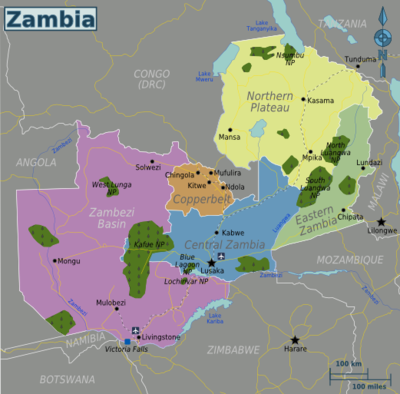
- -15.416667 28.283333 1 Lusaka — the capital and largest city of the country
- -12.544722 27.870833 2 Chingola — in the industrial Copperbelt region
- -13.638611 32.645278 3 Chipata — provincial capital of Eastern Province, on the way to Malawi
- -14.433333 28.45 4 Kabwe — large town midway between Lusaka and Ndola
- -10.211667 31.178333 5 Kasama — capital city of the Northern Province
- -12.820833 28.211944 6 Kitwe — mining city in the Copperbelt and Zambia's second largest
- -17.85 25.866667 7 Livingstone — gateway to the Victoria Falls
- -12.968889 28.6325 8 Ndola — administrative capital of the Copperbelt
- -15.416667 23.283333 9 Mongu - biggest town in Zambezi Basin.
Other destinations
- -15.28 25.7 2 Kafue National Park — largest national park of the country
- -15.75 29.333333 4 Lower Zambezi National Park — used to be the president's private game reserve, now pristine wilderness without mass tourism
- -12 32 5 North Luangwa National Park — open for day trips and safaris
- -13 31.5 7 South Luangwa National Park — one of Africa's great safari destinations
The territory of Northern Rhodesia was administered by the South Africa Company from 1891 until it was taken over by the UK in 1923. During the 1920s and 1930s, advances in mining spurred development and immigration. The name was changed to Zambia upon independence in 1964. In the 1970s, 1980s and 1990s, declining copper prices, one party democracy and a prolonged drought hurt the economy. Kenneth Kaunda, who led the fight for independence, instituted one party rule, which came to an end in 1991. Since then, Zambia has been a multi-party democracy.

Much of Zambia remains desperately poor , with GDP per capita on the order of US$600/year, and the bulk of Zambia's population lives on subsistence agriculture. The economy continues to revolve around copper , but after decades of mismanagement the industry is now doing better thanks to higher commodity prices and investments made after privatisation. The country's tourism sector has benefitted from the misfortunes of its neighbour Zimbabwe as tourists have flocked to the northern side of the Victoria Falls and Zambia's safaris.
As can be seen even from the bizarre squashed-peanut shape of the country, Zambia is one of the stranger legacies of colonialism, agglomerating a large number of different ethnic groups (73, according to the official count) and languages (20, plus dialects). Fortunately, with a long history of coexistence, significant migration around the country and similar Bantu-family languages, they all seem to get along pretty well and Zambia has been spared the violent interethnic strife that has decimated countries like Rwanda .
The Bemba are the largest ethnic group in Zambia, but they still form only about 20% of the population. The Bemba came from the Congo in the 16th century, and while their homelands are in the north and centre of the country, many have immigrated to Lusaka and the Copperbelt.
The Chewa , Ngoni and Nsenga tribes, all found in the east of the country, share the Nyanja language and form Zambia's second largest grouping with about 15%.
The Tonga , Ila and Lenje , known together as the Bantu Botatwe (Three Peoples), are a close runner-up with 15% of the population, concentrated in the west of the country in the Zambezi Valley and the plateaus to the north.
The Lozi in the far west (6%) are known for their craftwork, particularly basketry, and for a low-key (non-violent) secessionist movement calling for an independent Barotseland.
Other tribes in Zambia's patchwork include the Lala and Bisa (5%), the Kaonde (3%), the Mambwe and Lungu (3%), the Lunda (3%), the Lamba (2.5%) and the Luvale (2%), and 57 more. Despair not: the differences are not crucial for travelers, and locals will be happy to explain their traditions when needed, notably at festivals.
White Africans of English or Afrikaner descent (1.2%) are also visible, particularly in the more upscale areas of the major cities.
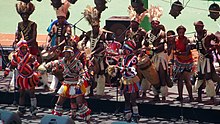
A highlight of any trip to Zambia is a visit to any of the many traditional festivals held throughout the country. Planning ahead can be tough though, as schedules are variable and not all are held yearly. Also, if you do manage to attend, bring along tolerance for heat, dust and crowds (increasingly drunk as the evening wears on) and patience for endless speeches by local functionaries like the Assistant Vice-Secretary for Fertilizer Co-operatives in Rutungu Sub-Province. On the plus side, any foreigners attending can usually sneak into the VIP stands, although you may get hassled for photo permits.
- Kazanga , Kaoma [Central Western Zambia] (June - August). The Kazanga ceremony is considered Zambia's oldest traditional ceremony having been celebrated by the Nkoya people for over 500 years. The ceremony celebrates and maintains Nkoya traditions of music, dance and many other ancient practices.
- Kuomboka , Lealui / Limulunga ( Western Province , around Easter (March-April). The most famous of Zambia's festivals, this is the ceremonial migration of the Lozi king ( litunga ) from his dry season abode at Lealui to his wet season palace at Limulunga. Wearing an elaborate Victorian ambassador's costume, the litunga is taken by a flotilla of barges down the river, with musical accompaniment and, of course, much feasting at the destination.
- Ncwala , near Chipata , 24 February. A Ngoni festival to celebrate the first fruit of the season, where the Ngoni chief ceremonially tastes the fruit of the land, then spears a bull and drinks its blood.
- Kulamba , near Chipata , August. A Chewa thanksgiving festival known for its Nyau secret society dancers.
- Likumbi Lya Mize (August)
This is a popular August festival (The Day of Mize). This ceremony takes place at Mize, the official palace of Senior Chief Ndungu, about seven kilometres west of Zambezi Boma. People of the Luvale tribe gather to celebrate their cultural heritage, bringing displays of all types of handicrafts and spicing the event with traditional singing and dancing while the chief holds court. Mize is the official palace of Senior Chief Ndungu. The Makishi dancers recreate famous events from Luvale mythology, and local artists display their work.
- Livingstone Cultural & Arts Festival This was first held in 1994, this festival bring the traditional rulers from all the provinces of Zambia and visitors are also allowed with the knowledge of their culture in their tribe. This festival capture musicians, artist, poets, and dramatist.
- Shimunenga is a ceremony to show devotion to ancestors. The ceremony takes place on a full moon on weekends in September and October. The Ba-lla tribe celebrate this ceremony at Malla on the Kafue Flats.
- Umutomboko ceremony of the Lunda people in Luapula Province is held at Mwansabombwe to depict the coming to Zambia by the Lunda and Luba people from Kola in now Congo DR. The ceremony is held in July and is graced by Mwata Kazembe who performs a dance to commemorate the occasion.
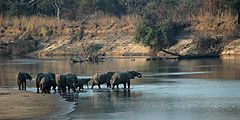
If you look at a map, Zambia appears to be squarely in the tropics, but thanks to its landlocked and elevated position it does have distinct seasons that run as follows:
- Dry season — May to August. The coolest time of the year, with temperatures 24–28°C during the day and sometimes as low as 7°C at night. Probably the best time of year to visit Zambia; come early in the dry season for birdwatching or to see Vic Falls at their biggest, or later when the bush has dried up for good game-spotting on safari.
- Hot season — September to November. Temperatures rocket up to a scorching 38–42°C and clouds of swirling dust make driving on dirt roads an asthmatic's nightmare. If you can take the heat, though, it's a good time for safaris as wildlife clusters around the few remaining watering holes.
- Wet season — December to April. Temperatures cool down to 32°C or so and, true to the name, there is a lot of rain – sometimes just an hour or two, sometimes for days on end. Unsealed roads become impassable muddy nightmares, and many safari lodges close.
Temperatures do fluctuate based on the altitude, if you are in a valley (such as the Zambezi) it will be warmer and if you are higher up (Kasama) it will be cooler.
- January 1 - New Year's Day
- March 12 - Youth Day
- Easter - moveable
- May 25 - African Freedom Day
- October 18 - National Prayer Day
- October 24 - Independence Day
- December 25 - Christmas
Tourist information
- Zambia Tourism website

Most Western visitors no longer need a visa to enter Zambia . Visa-free entry is also possible for some nationalities, including Malaysia , Singapore , Zimbabwe and South Africa . See the immigration department's web-site for the full list of visa-exempt nationalities. Current visa prices for anyone that needs a visa are US$50 for a single-entry and US$80 for a multiple-entry visa for all nationalities and is valid for 3 months;
- A day entry visa is available to any nationalities that need a visa at US$20, valid 24 hours
- Transit visas carry the same cost as a single entry visa, valid 7 days
There is also the 30-day US$50 Univisa which is good for both Zambia and Zimbabwe . The Univisa can only be obtained at Livingstone airport , Victoria falls land border , Kazangula Botswana border and Lusaka airport .
Do check with the nearest Zambian embassy for the latest information; the Zambian Embassy to the US has some information on their homepage , and getting the visa before arrival will reduce the uncertainty factor.
If you require a visa to enter Zambia, you might be able to apply for one at your embassy or consulate in the country where you legally reside if there is no Zambian diplomatic post. For example, the British embassies in Al Khobar , Amman , Belgrade , Budapest , Guatemala City [ dead link ] , Helsinki , Jakarta , Jeddah , Kyiv , Prague , Pristina , Rabat , Riga , Riyadh , Rome , Sofia , Tallinn , Vienna , Warsaw and Zagreb accept Zambian visa applications (this list is not exhaustive). British diplomatic posts charge £50 to process a Zambian visa application and an extra £70 if the authorities in Zambia require the visa application to be referred to them. The authorities in Zambia can also decide to charge an additional fee if they correspond with you directly.
Lusaka Airport Customs and Immigration is unprepared to deal with lots of tourists. There are four lanes, segmented by: Zambian passport holders; Residents; Tourists; and Diplomats. Tellingly, the lane for tourists is sometimes unstaffed. Although there are many immigration officers present, in the Tourist lane is often unstaffed. Be prepared for all other lanes to empty before being processed.
For those who would prefer to leave the hassle to someone else, specialist safari holiday companies can arrange immigration for you.
Clearing customs
Every country has its quirks, and one of Zamibia's is that you are not to possess even small amounts of a very common (and very safe) medication for treating allergy attacks: diphenhydramine. This is the active ingredient in Benadryl brand antihistamine pills, but it's also added to some other over-the-counter medications. Zambian Drug Enforcement Commission has arrested unwary tourists who had no idea that this everyday drug was restricted here.

Zambia's main international gateway is Lusaka airport ( LUN IATA ), which has flights to
- Istanbul with Turkish Airlines .
- Addis Ababa and Harare with Ethiopia airlines
- Dubai with Emirates Airlines
- Nairobi and Harare with Kenya airways
- Johannesburg with South Africa airways & Airlink
- Dar es Salaam with Air Tanzania
- Kigali with RwandAir
- Doha with Qatar airways .
- Lilongwe and Harare with Malawi airlines
For flights within Zambia, ProFlight airlines goes to Livingstone , near Victoria Falls , and Mfuwe , near South Luangwa National Park , Kasama , Ndola , Kitwe , Solwezi, and Lufupa in Kafue National Park .
Livingstone International Airport has direct flights to
- Johannesburg with Airlink , CemAir , Zambia Airways and Low-cost FlySafair
- Nairobi and Cape Town with Kenya airways .
Ndola International Airport has direct flights to
- Johannesburg with Airlink
- Nairobi with Kenya airways
- Addis Ababa with Ethiopian airlines
TAZARA trains run between Kapiri Mposhi , Zambia, and Dar es Salaam , Tanzania , on Tuesdays and Fridays. According to the schedule, the trip takes 38 hours. a train ride between Dar es Salaam and Zambia is a beautiful way to see the countryside at a reasonable price (US$30 for a first class sleeper and $25 for second).

Several important things to note about this trip, however:
- Bring water.
- Immigration officials stamp passports as soon as the train crosses the border — probably in the middle of the night. Naturally, this is also when thieves work. If you are riding in a first- or second-class cabin, be very careful when opening your door.
- If you miss the immigration official, they will either: turn you around and send you back to the border; or, arrange for a stamp, pending payment of a "special tax."
- Immediately upon crossing the border, the crew no longer accepts the currency of the country you just exited. In other words, if you are travelling from Lusaka to Dar es Salaam , the moment you cross the border, your Kwacha is no longer legal tender; you must use Shillings. It is, therefore, a good idea to exchange money before the journey — blackmarketeers along the railroad offer poor exchange rates.
- Do not leave valuables near windows, especially at stops.
- Normally the trains have restaurant cars in the middle of the train and in the end or a train saloon car with a bar. However, some stages of the journey, the restaurant and bar may have run out of stock.
- Reservations are not always honoured; someone may be sleeping on your bed already if you came onboard in the middle of the journey.
- In first class cabins, women and men can stay in same compartment, but in 2nd class they are female and male only.
- Tazara (Tanzania Zambia railways) were built with Chinese help and labour in the 1970s. Wagons were brought from China, therefore they are of a high standard, however. maintenance has been lacking somewhat in the last couple of decades.
- The last stop in Zambia is in the middle of nowhere, a small town named Kapiri Mposhi. Plenty of minibuses are eager to carry you to Lusaka, it's about a 2-3 hour trip. The first town that deserves that name on the way to Lusaka from Kapiri is Kabwe (it is rated among 5 most polluted place on earth due to mining!)
The 2nd class sleeper train fare from Kapiri Mposhi to the Tanzanian Border at Tunduma is 135 Kwacha. The journey is 883 km (549 miles) .
Via Zimbabwe/ Victoria Falls : trains in Zimbabwe run from Bulawayo to Victoria Falls. You can take a taxi or hike 13 km across the border at the Victoria Falls Bridge to Livingstone station in Zambia and catch a Zambia Railways train to Lusaka and the Copperbelt connecting with the Tazara railway in Kapiri Mposhi.
Vehicles drive on the left side of the road in Zambia.
There are many ways to get into Zambia by car, but the most popular include:
- through Livingstone (in the south) from Zimbabwe
- via the Chirundu Bridge (in the south) from Zimbabwe
- via the Kariba Dam (in the south) from Zimbabwe
- through Chipata (in the east) from Malawi
- through Chingola (in the Copperbelt ) from the Democratic Republic of the Congo
- via the Katima Mulilo Bridge from Namibia
- via the Kazungula Ferry from Botswana
- through Tunduma and Nakonde from Tanzania
Crossing international borders by car will incur a tax, depending on the size of the vehicle. The process can also take awhile as you will have to pay at different booths or offices, often not conveniently located. For a standard sedan, you can expect to pay the following:
- Carbon tax at K50, payable in kwachas only
- Third Party Insurance at approximately US$46, payable in rands, US dollars, or kwachas
- You will also pay a toll fee of US$10, payable in dollars as there are no Toll Gates on the road in Zambia. You can get a $5 road pass if you are only going to certain locations with in the country e.g. Kazungula to Livingstone
- Kazungula Ferry charges based on vehicular size approximately $10, payable in Kwacha. There are black market traders on the ferries but their rates are bad.
Border crossings are not without corruption and you are particularly vulnerable when travelling by car. Try to avoid arriving early in the day to avoid having to choose between paying a bribe or spending the night in the car at the border post.
There are many international bus routes to Zambia. You can take a bus across the border from Malawi , Zimbabwe , Tanzania , Namibia . Immigration might be painstaking, considering the large number of people requiring simultaneous processing .
Zambia is landlocked but borders on Tanzania's Lake Tanganyika, and there are regular international ferry services across the lake a few times a week. The ship, M/S Liemba was built in Germany in 1914, cut in pieces, shipped to Tanzania, carried by train to Kigoma (Tanzania) and reassembled there again. It is a charming ship of Titanic era, sunk twice, with reasonable services. This trip should be taken if you are not short of time. Also, if you enter Zambia through Namibia 's Caprivi Strip , you will have to cross the Zambezi River. You will have 2 options:
- You may ride on a ferry (for a dollar); or,
- You may hire a local boy with a dugout canoe to carry you across (for 50 cents).
Zambia is large and distances long, so budget plenty of time for getting around.
Domestic flights on Proflight connect Zambia's major cities and tourist destinations. While undoubtedly the fastest and most comfortable way of getting around, they are quite expensive with an hour-long flight (say, Lusaka - Mfuwe ) typically costing around US$150 one-way. Also note that planes are small and schedules sparse, but if you can rustle up enough people you can also charter planes for not much more.

Minibuses — meaning vans outfitted with seats — are popular, but they are often irregular, dangerous, and uncomfortable. To maximise profits, a "conductor" will squeeze as many paying customers — and their luggage, or katundu (ka-TOON-doo) — into the bus as possible; whether or not the customers are comfortable is irrelevant. In terms of meeting locals, however, this method is among the best, and it can provide a traveler with a truly "authentic" experience. Payment is made during the journey — banknotes are passed down the bus to the conductor at the front, and change comes back via the same route.
Larger, more sophisticated "luxury coaches" exist, too Power Tools , Juldan Motors , UBZ . These tend to be more reliable and safer; they depart on-time; they have dedicated space for guests and luggage; and tickets may be purchased in advance. Luxury coaches are much more comfortable and are virtually guaranteed to arrive, but they might seem "generic" to a seasoned traveler.
Vehicles drive on the left side of the road in Zambia — at least most of the time.
Car rental agencies exist in Zambia, but the costs are potentially great. Not only are rental rates high (US$100/day), but some of the main roads in Zambia are in very poor condition. Potholes often take up the entire road, and during the rainy season, large sections of the roads wash away. As you move away from city centres (possibly only a kilometre or so away) you will encounter dirt roads. Although they might look solid, the dirt is often loose, and the chances of an accident are huge if you do not keep to a reasonable speed. Although you are not likely to get lost driving in Zambia (there are only a few roads), you are likely to underestimate the destructive power of these roads and damage a rental vehicle, or worse, yourself! 4WD vehicles are recommended at any time and necessary on dirt roads in the rainy season, although some roads will become completely impassable then.
Remember: there are no Roadside Assistance Packages, and very few ambulances, tow-trucks, or emergency vehicles of any kind in Zambia. Given the circumstances, bush mechanics can do an amazingly good job of patching up your vehicle, but patching up humans isn't so easy!
A nice 4x4 route in Zambia
For adventurous campers, the South Luangwa tour: Lusaka-Petauke-Malama-Mfuwe-Nsefu-Chipata-Lilongwe or Mpika. Very adventurous en scenic routes and campsites. Recommendable and for sure unforgettable.
Zambia is a big country (as big as France) and the public roads are pretty fair for a normal car. Sometimes there are deep potholes (holes in the road), but they are avoidable if you do not drive too fast. Most Zambians drive in a controlled way, sometimes a little too fast. Be especially aware for buses and trucks. They are wide and very long and drive far too fast. If you see a truck or bus approaching, then drive slower and keep left as left as you can. They tend to use your half of the road, pushing you off the road. If you want to see more of Zambia, you will need a good 4x4 four wheel drive car. Especially from December until early April at times rain falls and the roads are wet and muddy.
Zambia is a wonderful country, lovely people, full of stunning nature and wildlife. The most well known parks in Zambia are Kafue (West of Lusaka) and South Luangwa (East of Lusaka). South Luangwa is known and acknowledged to be one of the most beautiful wildlife parks in all Africa. Most national parks in Zambia, like South Luangwa National Parl (SLNP), can be visited with your private car. However, to enjoy this to the full, you will need a 4x4 car.
The South Luangwa National Park is surrounded by the so-called GMA’s (Game Management Areas). You will find only limited habitation and you will be able to see an abundance of wildlife, like, lions, leopards, elephants, girafs, etc. A recommendable tour is from Petauke to Malama, on to Mfuwe and to the Nsefu sector (or the other way around). This route can only be done with a well equipped 4x4 car. You will see and enjouy to the full, the true rural Africa, the local people and their villages and wildlife. From Lusaka you take the road to Chipata (Great Eastern Road) and from that road (well before Chipata) take the junction to Petauke. Once you drove through Petauke you will go off the tarred road on a very fair gravel road. After 60km on this road, you turn left followed by a 120 km local rural road to Malama Chiefdom and Mfuwe. The road is really not too bad. On the way you will have to go over some steep hills, but you will manage. When you go under the electricity network cables (ZESCO Main Power Lines), you enter the Malama Chiefdom and will be 15 km away from the junction. This junction will lead (via the Malama Chief’s Palace) you either to the Lusangazi Gate of the National Park (left) or onwards direction Mfuwe (right). The junction is at a little village. If you are able and willing to do so: The people here and in the villages around the Chief’s Palace, are very friendly and helpful. Leave something for them. It will be highly appreciated because the local people are poor.

If you head for Mfuwe, you will find a campsite after 9 km along the Luangwa River, called Malama Umoyo Camp. It is near (1.5 km after) the scouts training centre. This (basic) campsite is located at a stunning location overlooking the Luangwa River and a dry lagoon, most of the time filled with wildlife. Your hosts here are Menno en Virginie. From here it is also possible to make a daytrip to the National Park.
From Malama Umoyo Camp it is 42 km (2.5 hours drive) to Mfuwe. Mfuwe is a local but bigger than normal village. In the Mfuwe area you will find a lot of lodges, but also a good campsite. Recommendable is Croc Valley Camp. If you arrive from Malama and hit the tarred road, you turn left after 3km and after a few hundred metres right off the tarred road on to a gravelled road. Signposts will lead you further to Croc Valley Camp. Your hosts at Croc Valley Camp are Shaun and Milly. From here it is only a 5 minute drive to the main gate of the South Luangwa National Park (SLNP). Entree fee for the SLNP is US$25 per person per 24 hours and US$35 for a private car entering the park. At 06:00 the park is open and for private cars it is open until 18:00 hours.
From Mfuwe/Croc Valley Camp you can proceed to the Nsefu sector. Do not forget to fill your fuel tank in Mfuwe. You follow the tarred road to Chipata and the local airport and after about 12 km from Mfuwe (the cropping it is called) you turn left (you will see a signpost and two palm trees). After about 12 km you will reach the gate of the National Park. If you are going to camp, then tell at the gate that you are on your way to Zikomo camp. Zikomo Camp is just outside the borders of the park. Right after the gate you turn left and follow the road (about 4 to 5 km) to Zikomo Camp. Your host at the camp is Demian Wallace. The Nsefu sector is part of the SNLP and considered by many as the most beautiful part of the park.
After visiting Mfuwe, you can then return to Chipata (about 2 hours drive). Chipata is the capital of the Eastern Province and a good place to buy supplies and refuel. There are two supermarkets and lots of shops. Opposite Total fuel station you can find Afroc. Here you can refill camping gaz. From Chipata it is a 20 minutes drive to the Malawi border.
Crossing the border will take about half an hour. When entering Malawi, you have to fill in a TIP form for your car and pay 5,000 Malawi kwacha. This will allow your car in Malwai for 30 days. Do not forget to insure your car for Malawi, because they check on it frequently. Just after the border there is an insurance company. Try to get Malawi kwachas before you enter the border post because they only accept Malawi kwachas and not US dollars or any other currency. At the border there are many money changers. Tip: take one US$100 note in your hand, put away your wallet, and change this for 100 x 180 Malawi kwacha. Be careful. These guys are quick and often give you less than they say. So you get 18,000 kwachas for US$100. You should a least get a 15% better rate than the official bank rate.
If you passed the border it will be another 125 km over a good tarred road to Lilongwe. Watch your speed, especially where it says you have to drive 50km.
Alternative route:
From Mfuwe there is the possibility to go right through the park to the North. This is a really adventurous road. Do not drive this road when it is wet/raining! When you passed the northern gate, you will reach the escarpment and you have to drive up a very steep road. It can be done by good 4x4 drivers, but do it slowly. Once out of the Luangwa valley you will have a stunning view over the valley. You then can proceed to Mpika. In Mpika you can camp and get new supplies and fuel. From Mpika you can visit Kasanka NP (in November you will be able to see the daily migrations of millions of bats) or you can go up north. Recommended is to visit Shiwa Ngandu. A beautiful mansion built by an eccentric British gentleman (Stewart Gore Brown) a 100 years ago in the middle of nowhere. Camping you can near the hot water springs. The water is lovely and relaxing for at least a half hour dip. Mark Harvey and his wife are your hosts here. From here you can proceed for example to Tanzania (to Ruaha NP, also a place not to miss).
When visiting Mfuwe, if you prefer a lodge for a good sleep, dinner and a warm shower: Thornicroft Lodge en Croc Valley are both recommendable (good value for money).
You can catch TAZARA trains between Kapiri Mposhi and Nakonde at the Tanzanian border. The Zambezi train, operated by Zambia Railways runs between Livingstone and Kitwe via the capital Lusaka and Kapiri Mposhi every Wednesday. All trains are relatively reliable and safe, but slow. You might still consider them for the views and sense of adventure they provide, though.
Hitchhiking in Zambia is popular, although it can be extremely hit-or-miss as traffic density is low. Also note that, if picked up by a local, you will be expected to pay for the ride. Nevertheless, hitchhiking does not carry with it the same stigma in Zambia as it does in the United States; you are unlikely to be harmed, and you might make a great connection.
In Zambia, travelers do not "thumb" a ride. The proper method for flagging transportation is:
- Pile your luggage near the road.
- Sit in the shade.
- When you see/hear a vehicle, jump up.
- Rush to your luggage.
- From your shoulder, wave your entire arm up and down, palm open and facing the ground, as though you are fanning someone in front of you.
- Hope the vehicle stops.
In the south the use of private taxis or cabs is easy enough. Cabs are a distinctive light blue, though not all have a taxi sign on top. Most drivers will negotiate a rate and are quite happy to drive between cities and often cross in Zimbabwe from Livingstone.
Thanks to its former colonial status, English is Zambia's official language and the language most often spoken in schools, on the radio, in government offices, etc. However, there are over 70 different Bantu languages spoken throughout the country, the most important of which are:
- Bemba , spoken in Lusaka (a little), the Copperbelt and the north;
- Nyanja (Chewa), spoken in the east as well as in Lusaka where it is the main language;
- Tonga , spoken in the south and Livingstone;
- Lozi , which predominates in Western province; and
- Lunda and Kaonde , which are spoken in Northwestern Province.
Many urban Zambians will speak at least passable English. As you move into the rural areas, though, expect communication to become more difficult. Nevertheless, do not be surprised to find a rural Zambian who speaks flawless English.
The most important thing to remember when speaking to Zambians is to greet them. When you first approach a Zambian, always begin by asking, "How are you?" even if you do not care. They will consider you very respectful. Sport, especially football (soccer) is a very good conversation topic with men; church is a good topic with either gender.
Wherever you happen to be in Zambia, it is a good idea to learn the local way of exchanging greetings, asking for something politely, and thanking someone. These simple phrases will help make life easier.
Afrikaans usage is on a slow but steady rise, mainly because of immigration from South Africa and the ease of learning the language.

With national parks all over the country, it's never hard to find a piece of postcard-perfect Africa in Zambia. The country offers excellent safari opportunities, and parks range from popular tourist destinations to seemingly unexplored wilderness. There's an amazing array of wildlife to spot, and elephants, giraffes, huge herds of grazers, lions and hundreds of kinds of birds are only the tip of the iceberg when talking about Zambia's fauna. South Luangwa National Park is surely the most famous one, and a travellers' favourite because of its dense and greatly varied population of wild animals. North Luangwa National Park is far less crowded and known mainly for the massive herds of buffalo and the large lion prides that roam its area. Even more off the beaten track - to the extent that even dirt roads are very limited - is Lower Zambezi National Park . The fact that it was the private hunting ground for the president ensured that development remained limited and the real, untouched African wilderness is all around. If you're around in October, head to Kasanka National Park to witness the enormous bat migration , with an estimated 8 million of the little creatures flying in the air above you. If you're fit enough, go canoeing down the Zambezi river as far as the gorgeous Mpata Gorge .
Apart from its great wildlife and African landscapes, the Victoria Falls , marking the border with Zimbabwe, are one of Zambia's major draws. No visit to the country is complete without a stop at one of the most stunning waterfalls in the world. An extra fascinating experience is a November dip in the Devil's Pool , a naturally formed basin, allowing for a few weeks of fairly safe swims right on the edge of the dramatically high drop.
For a more cultural experience, make sure to be part of one of the country's many colourful festivals and witness traditional ceremonies like the springtime Ku'omboka of the Lozi people. Visit the Shiwa Ng'andu estate near Mpika for a remarkable insight of Zambia's colonial past. Or, for a more urban vibe of modern Africa, spend a day strolling the colourful outdoor markets of bustling Lusaka .
The currency of Zambia is the kwacha — meaning "sunrise," so-named to celebrate Zambia's independence — denoted by the symbol ZK (ISO code: ZMW).
The currency was re-based (dropping the last three zeros) in 2013, but you can occasionally receive change in both the new re-based currency and the old currency.
Coins of Zambia come in denominations of 5, 10 and 50 ngwee and 1 kwacha. Banknotes of Zambia come in denominations of 2, 5, 10, 20, 50 and 100 kwacha.
U.S. dollars are still commonly used for larger purchases (although it's illegal) and will be accepted by anybody dealing with tourists. It is not unusual to see all printed prices at a hotel restaurant in local currency, and then receive a bill in U.S. dollars. If you bring U.S. dollars, in Zambia only the "big heads" (new notes) are accepted in banks and bureaux de change, small heads are not accepted (if you are lucky you can change them in Livingstone). US$50 and US$100 notes are the best to bring, for smaller nominations you will get a poorer rate at the bureaux (5-10% less).
Changing euros is difficult, especially up country: bureaux are giving a very poor rate (25% less than the market rate!) International banks will accept, but with commission charge. Finance Bank, Arcades Shopping Centre Lusaka is known to accept euros at a good rate and without commission charge. Bureaux and banks will only change a maximum of US$1000 (or equivalent) per person per day. Watch the rates as they can change overnight, fluctuations of 3-5% per day are common.
South African rand are exchanged relatively easily in major centres. Other second tier currencies like the Australian dollar are not worth bothering with. Expect blank looks from the locals, and a mocking laugh from those in the tourist trade.
If you want to sound like a local , refer to 1000 kwacha as a pin , so for example 10,000 kwacha is "ten pin". In the 1990s, the kwacha devalued so rapidly that the government didn't have time to produce new, larger bank notes. To pay for things, Zambians often had to bundle — or "pin" together — large numbers of small bills.
ATM s may be found in all major towns and cities. Most of the ATMs accept Visa and Mastercard. Other international credit cards (like American Express, Union Pay, Discover card, Diners Club, JCB) can also be used at some ATMs. Most supermarkets, shops and restaurants accept debit or credit cards , as do practically all high-end hotels and safari lodges. ATMs only dispense local currency. The big banks ATM networks which all take Mastercard and Visa Card are Access bank, Ecobank, Standard Chartered Bank, FNB, Zanaco, Stanbic, UBA and ABSA.
Traveler's cheques are impossible to process in Zambia.
Most shopkeepers advertise fixed prices and are unwilling to negotiate, but this is not a given. On the other hand, most "freelance" salesmen — vendors selling curios; taxi drivers; etc. — who do not post their prices are usually willing to negotiate. As a (very) general rule of thumb, assume the first price they mention is at least double the amount they will accept. You should not be afraid to bargain — after all, Zambians bargain among themselves — but try not to get carried away with saving a few pennies.
Tipping is not required — indeed, it was at one point illegal — but often expected. Porters expect US$0.50 or so per bag, and better restaurants typically add in a 10% service charge or expect an equivalent tip.
Finally, keep in mind the Zambian custom of mbasela (em-buh-SAY-la) — giving a freebie when more than one item is purchased. If you buy a few small items, do not be shy about asking for your mbasela .
Zambia has about the same costs compared to its neighbours. A bare-bones budget traveler will be looking at a minimum of US$25 a day just for a dorm bed in a Backpackers hostel and three meals and transport. At the other end of the spectrum, all-inclusive safari lodges or Lusaka/Livingstone's five-star hotels will take care of all your needs but charge US$250/day and up for the privilege. Finding a middle ground between these two extremes can be difficult but there are safari operators who will offer 'DIY' camping for around US$10 to $95 and above - it pays to look around (see below).
Zambian safaris are amongst the best available in Africa; they offer top-quality viewing experiences with the continent's top guides. Zambia's national parks are not 'commercialised' as in other countries (e.g. Kenya and South Africa) and one will not see the ridiculous zebra striped game viewing buses, Land Cruisers, etc.

Traditional Zambian food revolves around one staple, maize , served in one form, nsima (n'SHEE-ma). Nsima is basically a type of thick porridge, rolled into balls with your right hand and dipped into a variety of stews known as relishes ( ndiwo , umunani ). Those who can afford them eat relishes of beef, chicken or fish, but the many who can't make do with beans, tiny dried fish ( kapenta ), peanuts, pumpkin leaves ( chibwabwa ) and other vegetables such as okra ( ndelele ), cabbage and rape. At breakfast, nsima can be served watered down into a soup, maybe with a little sugar. Local restaurants will serve nsima and relish for less than 5 kwacha.
Western food has also made major inroads, particularly in major cities, and in Lusaka or Livingstone you can find almost any food you like. Fast food — including chips and burgers, pizza, and fried chicken — is very popular in Zambia. Bakeries making cheap fresh bread are a common sight in towns, and rice from Chama provides an alternative staple if all the maize starts to get to you.
For sit-down meals, ethnic eateries are popular. In Lusaka, especially noteworthy is the Sunday brunch at The Intercontinental ; and if you like Indian food, be sure to hit The Dil. Of course, game parks often cater to wealthy — usually foreign — visitors; therefore, high-quality Western meals can be found easily. Along the major roadways, you will find "tuck shops" featuring packaged cookies or take-away meals — meat pies or sausage rolls, for instance — which may or may not satisfy you.
Finally, in terms of hygiene outside the major cities, you are unlikely to find a proper washroom with running water. You will probably be given a bowl of water, a piece of soap, and a (damp) towel. Therefore, some travelers bring small bottles of anti-bacterial hand soap with them.
Tap water in Zambia is generally not drinkable, at least unless boiled. Bottled water is widely available in cities, but not necessarily in rural areas. It is advisable to carry chlorine pills to purify water, in case of emergency.
Soft drinks
A traditional local drink worth trying is maheu , a somewhat gritty and vaguely yogurty but refreshing beverage made from maize meal. Factory-produced maheu is sweet, comes in plastic bottles and is available in a variety of flavors including banana, chocolate and orange, while homemade versions are usually unflavored and less sweet.
Coke products are accessible and cheap at less than a quarter a bottle, but beware of the deposit system: in rural areas, you may have to return an empty bottle before they'll sell you a new one!
Zambia's best-known brew is Mosi , a clear 4% lager available everywhere. Eagle has more taste and more kick at 5.5%, while Zambezi Lager is a microbrew worth sampling if you run into it. The South African brand Castle is also bottled locally, and all of the above run around $1 in a store or $1-2 in a bar.
If you are near the borders, you are likely to find Carlsberg (good, from Malawi ), Simba (excellent, from the Democratic Republic of the Congo ), Kilimanjaro (nice lager, from Tanzania ), and Tusker (strong, from Kenya ). Other imports can be found in larger markets but will also cost more.
Local alcohol

The locals' drink of choice is masese (muh-SE-say) or ucwala (uch-WALA), also known as Chibuku after the biggest brand, made from maize, millet, or cassava and resembling sour porridge in texture and taste. If you want to try this, it's best to look out for the factory-made kind in milk-carton-like containers.
In rural areas, there are opportunities to drink local "homebrews." A wide variety of homebrews exist in Zambia, from beers made from honey (in the Southern province of the country), to wine made from tea leaves (in the Eastern portion of the country).
Finally, there is kachasu (cuh-CHA-suh), a spirit distilled from anything Zambians can get their hands on — including battery acid and fertiliser. For obvious reasons, therefore, it is better to avoid this moonshine.
On a final note, most men at bars are relaxing, while many women at bars are working. Therefore, if you are a single woman in a Zambian bar, be aware that you might be approached and offered the opportunity to do something you did not intend to do.
Accommodation in Zambia runs the gamut. In Zambia, you can sleep in a top-notch hotel for a few hundred dollars per night (such as The Intercontinental); or you can stay in an independent hotel (like The Ndeke), for about $50; or you can opt for a budget experience, and spend about: $5 to $8 (camping) or $10/15 (dorm bed) or $10-30 (double room) at a one of about 7 backpackers hostels around Zambia. These are only a few of the options. There are now many Budget Lodges in many towns from K 200 a night. You need to ask around when you get to a town.
Outside the big cities or tourist areas, however, you might be hard-pressed to find quality accommodation. If your tastes run to the elegant — or even if you demand constant electricity — you might want to reconsider venturing too deep into the bush. However, if you seek an enjoyable, memorable, and authentic night at a local hotel, you might be pleasantly surprised.
The University of Zambia is the official university. However, it is not affordable for most Zambians. There are also technical schools throughout Zambia, and teachers' training colleges are found in each provincial capital, providing two year's coursework for about US$300.
Northrise University is in Ndola. As a private university, it focuses on business, information technology and theological study.
For tourists, the biggest educational experiences would likely be:
- Visit a game park and learn as much as possible about the area's animals from the guides. Guides can be an incredible source of information. Remember to tip them.
- Arrange for an overnight stay in a "Traditional African Village". Of course, because the locals have prepared for you, it is no longer 100% authentic, but you will get an idea of the hardships Zambians face.

Unemployment in Zambia was 8% in 2018, a considerable improvement compared to the decades before 2011. The agriculture, forestry and fisheries industries employ over 70% of Zambian workers. The legal minimum wage for non-unionised workers equates to around US$90 per month – one of the lowest minimum wages in the world. Most minimum wage earners supplement this through subsistence farming. In practice, almost all unionised workers received salaries considerably higher than the non-unionised minimum wage.
As for tourists, temporary work is likely to be difficult to secure. Although there is a substantial expat community in Zambia, most of these individuals are contracted by international agencies; by and large, they did not come to Zambia and then find work. Persistence and connections might pay off, but outside of the few hostels or Western-oriented bars, a tourist should not expect to find ready employment.
Women should avoid going to bars alone. Furthermore, men should avoid purchasing drinks for Zambian women they meet casually in bars; this is an invitation to spend the night.
There is a 10PM curfew throughout most of the country. Avoid being found on the street after 10PM or risk being arrested.
As the Kwacha has been declining, it often takes fistfuls of cash to purchase items. Be careful about flashing money.
While it's possible to get a good exchange rate from an individual money-changer on the street (although you really should use banks if you can), you should avoid changing money with groups of men. They are likely running a scam.
Generally, Zambians are friendly people. However — as with any location — be careful about walking at night, especially if you've been drinking. There are few streetlights, and many of the locals are very poor.
Carjacking is also a potential risk while driving after dark.
Many places of accommodation have electric fences, gates and guards for added security. You can check before booking.
Corruption is endemic in Zambia. Don't expect the police to be of any substantial assistance to you. If you need to log a report for insurance purposes, you can expect to have to pay to do so. If you make an accusation or indicate a suspicion against a local, the person you lodge the complaint against may be interrogated and beaten by the police.
Stay healthy
Drinking tap water in the cities is potentially risky, unless either (a) you have a strong stomach, or (b) you are at a restaurant or hotel that caters to foreigners. If neither of these conditions apply to you, you should probably stick with the bottled stuff, boiled water or chlorine tablets. Check bottles of water to make sure that they are sealed, as some local "bottled" water could be simply tap water poured into a used bottle.
The HIV infection rate among older teenagers and adults was estimated to be 11.6% in 2017 – and even higher among younger women. Do not have unprotected sex.
Zambia is a highly malarial country. Especially at dusk, you should make every effort to cover exposed skin with clothing or insect repellent. In addition, using malarial prophylaxis is highly recommended.
In practice, yellow fever is not a problem in Zambia anymore, except perhaps in the extreme west along the Congolese borders. However, many countries will insist on a yellow fever vaccination certificate if they find out you've been to Zambia, so it's best to get a jab at least 10 to 14 days before arriving.
Typhoid and Hepatitis B vaccines are advised for all travelers entering Zambia.
Zambians follow a strict patriarchal society — men are afforded more respect than women, and older men are respected more than younger men. However, you might find that a white person, of any gender or age, is granted the most respect of all. A holdover from colonial times, this might make a traveler uncomfortable, but this is largely a Zambian's way of being courteous. Accept their hospitality.
Zambians are a curious people. To a Western mindset, this might be interpreted as unnecessarily staring at you or talking about you in front of you. Be prepared to be greeted by kids yelling mzungu, mzungu! (literally, white man ) and answer lots of questions about yourself.
Zambians love to shake hands, and you should oblige them. However, Zambians often like to hold hands for the duration of a conversation. This should not be interpreted as anything sexual; they are merely trying to "connect" with you. If you feel uncomfortable, simply pull your hand away. If you wish to be courteous or show respect then holding your right wrist or elbow with your left hand as you shake is acceptable. Do not expect a firm handshake as this is considered aggressive, likewise do not be too firm in yours.
Eye contact is also considered aggressive and disrespectful, you can make eye contact but do not hold it, slide your eyes away, but do not face away.
Women should not wear shorts or mini-skirts, especially as they travel away from Lusaka. (Thighs, to Zambian men, are huge turn-ons.) Low-cut tops, however, while discouraged, are not nearly as provocative.
Pointing with the index finger should not be done, it is considered vulgar.
Finally, when meeting a Zambian — even to ask a question — you should always say hello and ask how they are. Properly greeting a Zambian is very important. They are uncomfortable with the Western notion of simply "getting to the point." Enquiries about children are generally welcome and are a good way to break the ice.
The Zambian mail service is slow and a little flaky (especially outside Lusaka), but not completely hopeless. Using a private courier service is still recommended if sending something important.
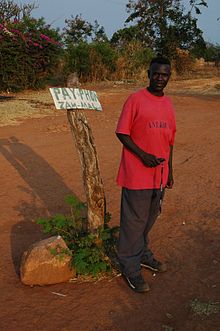
The country code for Zambia is "260." The city code for Lusaka is "211". For the city code for other towns, check the directory. However, phone service both within Zambia and into Zambia is very hit-or-miss. In large cities, you are more likely to get regular, dependable phone service, but it is by no means a guarantee. The farther you travel from Lusaka , the less likely you are to maintain a good connection. International calling rates can be as high as $3 per minute.
Zambia has a highly competitive market in mobile phones with three main operators: Airtel [ dead link ] (0976,0977,0979), Cell Z (0955) and MTN (0966,0967). Generally speaking, Airtel has the largest network, while Cell Z is the cheapest. You can pick up a local SIM card for as little as 5,000K (US$1). Prepaid time is sold in "units" corresponding to dollars: figure on 0.4 units for an SMS or up to 1 unit/minute for calls, although as always the precise tariffs are bewilderingly complex. If you plan on roaming with your non-Zambian SIM, check first to see if your home operator has made any roaming agreements; Zambia is usually not on the top of their list. Also note that the roaming prices are very high and coverage in rural areas can be spotty.
Booths labeled "public telephone" these days consist, more often than not, of a guy renting out his cellphone. Typical rates are 5K/min for domestic and 15K/min for international calls.
By internet
Internet cafes are springing up in Zambia, but again, connections can be sporadic and very slow. Moreover, because constant electricity is not a guarantee, some Internet cafes operate backup generators, which can be extremely costly. Be prepared to see Internet cafe charges as high as 25 cents per minute. Most hotels and backpackers hostels will offer internet connections to their guests for free.
- Has custom banner
- Has map markers
- Articles with dead external links
- Has Geo parameter
- Southern Africa
- All destination articles
- Usable countries
- Usable articles
- Country articles
- Pages using the Kartographer extension
Navigation menu
Destination
Popular places to visit.
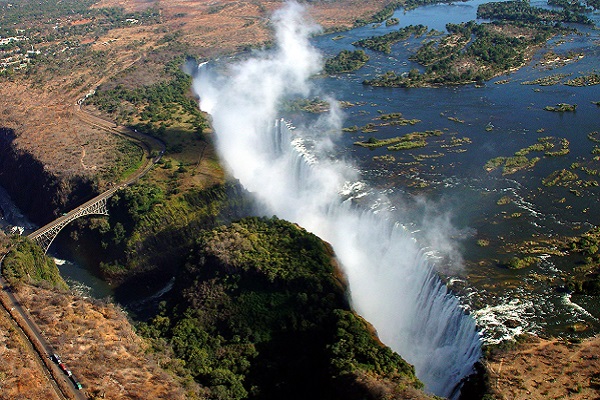
Livingstone & Victoria Falls
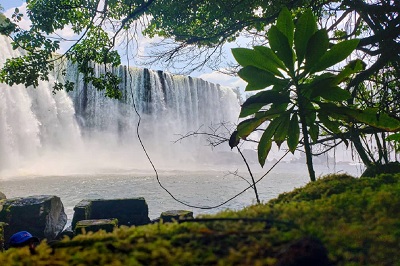
Northern Circuit
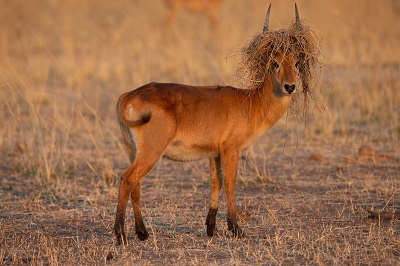
South Luangwa National Park
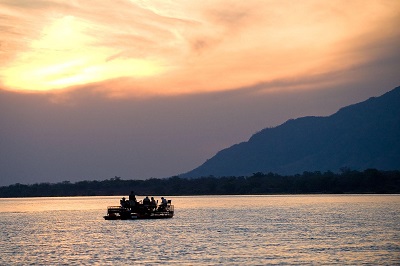
Lower Zambezi National Park
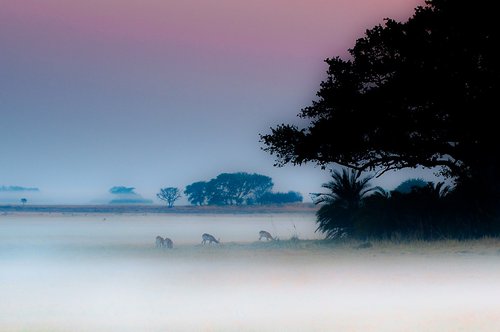
Kafue National Park
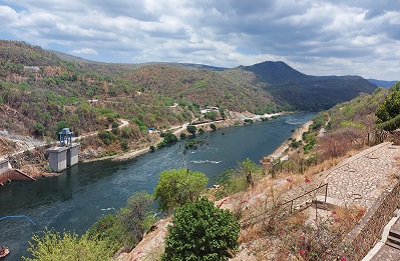
Must See & Do
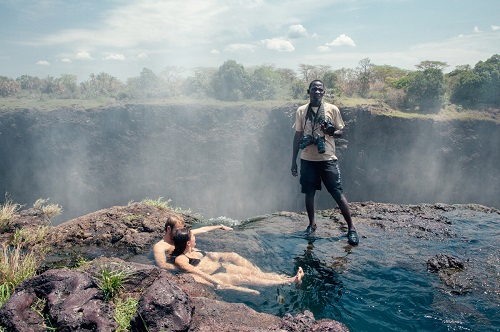
Devils Pool
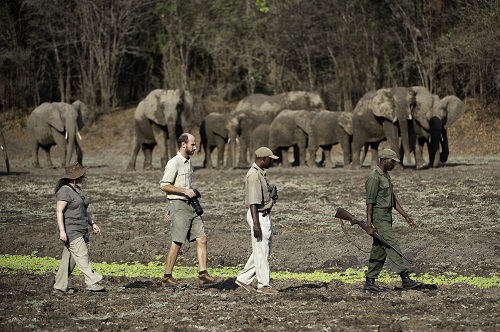
Walking Safaris
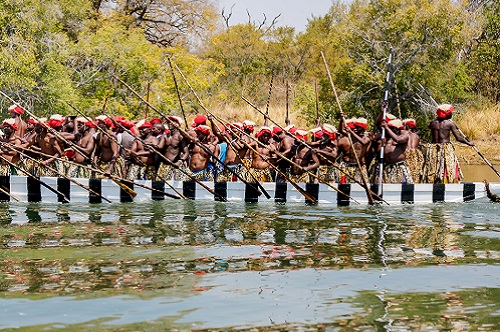
Kuomboka Ceremony
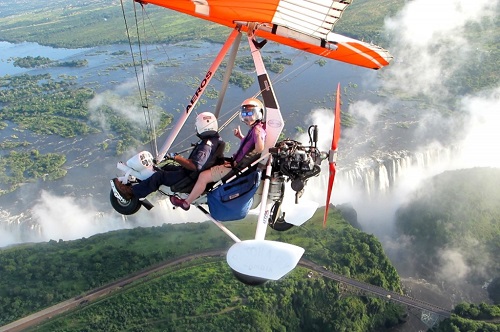
Microlighting
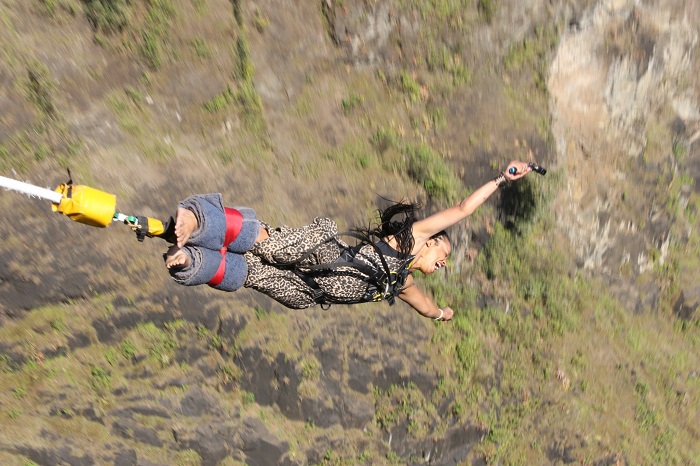
Bungee Jumping
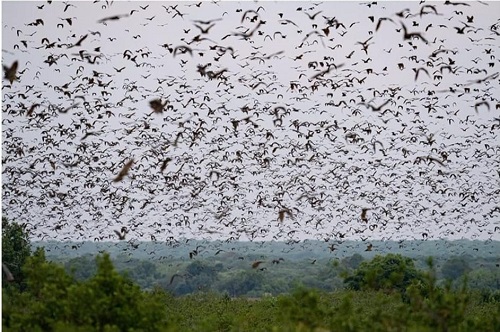
Annual Bat Migration
Join us in celebrating the wonders of Zambia! Let's share our passion for promoting this breathtaking destination together.
Useful Links
Abacus House, Kabelenga Road, Lusaka
+260 211 229087
Copyright © Zambia Tourism Agency . All Rights Reserved.
Developed by Zambia Tourism Agency

Welcome to Zambia!
Journey into the heart of africa, zambia sights, before arriving, travel tips.
Zambia, a captivating country nestled in the heart of Africa. Known for its untouched wilderness and breathtaking landscapes, Zambia is a haven for nature enthusiasts and adventure seekers alike.
Embark on a thrilling safari adventure in South Luangwa National Park, home to an abundance of wildlife including elephants, lions, leopards, and hippos. Traverse the vast plains, witness the Great Migration, and experience close encounters with these magnificent creatures.
For an adrenaline rush, visit Victoria Falls, one of the world’s most awe-inspiring natural wonders. Feel the mist on your face as you stand in awe of the sheer power and beauty of the mighty Zambezi River plunging into the abyss. Take a scenic helicopter ride or brave the thrilling whitewater rafting for an unforgettable experience.
Zambia’s diverse landscape also offers opportunities for outdoor enthusiasts. Explore the pristine wilderness of Lower Zambezi National Park, where you can go canoeing, fishing, or embark on a walking safari. Discover the enchanting wetlands of Bangweulu or the remote beauty of Liuwa Plain National Park, known for its wildebeest migration.
Immerse yourself in the rich culture of Zambia by visiting local villages and interacting with the warm and welcoming Zambian people. Experience vibrant traditional ceremonies, sample local cuisine, and learn about the country’s fascinating history and traditions.
Zambia’s rivers and lakes provide excellent opportunities for water-based activities such as fishing, boating, and kayaking. The stunning Lake Kariba is perfect for a relaxing cruise, while the Kafue River offers thrilling river safaris.
With its abundance of natural wonders, wildlife, and warm hospitality, Zambia is an ideal destination for those seeking an authentic African experience. Whether you’re an adventure enthusiast, a wildlife lover, or simply a traveler in search of untouched beauty, Zambia will leave you mesmerized and yearning for more.
Before you go
Travel essentials.
Don’t get stuck or lost. All you need to travel and comply with local requirements.
Book a flight
Book a hotel, travel authorization, our services, travel advisory & assistance, travel advisory, travel assistance, "yellow pages", our service, with you every step of your holidys.
Lorem ipsum dolor sit amet, cotns ctetur all of the adicing elit, sed do eiusmod tempor ale dunt ut labore et dolore magna aliqua Mauris amet.
Travel requirements & restrictions revision.
24/7 before & during-travel assistance, online book of all the required and recommended services., we will assist you in any situation. let us know..

ZambianTravel.org is a comprehensive tourism portal and advisor for Zambia, designed to provide travelers with all the information they need to plan a perfect trip to the country. The website offers a wealth of information on Zambia’s culture, history, attractions, and activities, as well as practical tips on visa requirements, transportation, and accommodations. ZambianTravel.org is dedicated to promoting tourism in Zambia and showcasing the best the country has to offer. With expert advice and insider tips, ZambianTravel.org is the ultimate guide for anyone planning to visit Zambia.
Disclaimer: ZambianTravel.org is an independent travel advisor and is not affiliated with or endorsed by any government agency or organization. We provide travel assistance services to individuals who are planning to travel to Zambia. Our services are designed to help travelers navigate the complex travel requirements and procedures, and our team of experienced professionals provides personalized support to ensure that travelers have a seamless and hassle-free travel experience. Please note that ZambianTravel.org is not a substitute for official government resources or processes, and we strongly advise travelers to refer to the relevant government websites and resources for the most up-to-date and accurate information.
8-day journey through Zambia

Nov 15, 2022 • 11 min read

Wayi Wayi Art Gallery holds frequent workshops © Jason Mulikita/Lonely Planet
With memorable activities like swimming on the ledge of a mighty waterfall to walking safaris, it’s surprising Zambia is less visited than other spots on the continent of Africa.
We recommend making it top of mind if you are considering a journey that involves spotting wildlife.
Mazuba Kapambwe-Mizzi shows you how to plan a wonderful week in zesty Zambia, her home country.

I have been a travel writer for almost 10 years, and have lived in Germany, Ethiopia, New York and Washington, DC. Yet I’ve spent half my life in my home country of Zambia. From my first time on a safari, where I went canoeing on the banks of the Zambezi river, to getting married at Victoria Falls, the heritage sites and culture of my country still leave me in awe.

Why you should visit Zambia
A landlocked country in Southern Africa , Zambia brims with waterfalls, lakes and national parks that make it an ideal destination for learning about history, experiencing culture and (of course) setting out on safari. You’ll find fewer visitors here than in neighboring countries like Botswana and Zimbabwe – making for more intimate experiences with more personal attention from guides.
The over 70 ethnic groups in the country host colorful traditional festivals throughout the year. The Kuomboka ceremony in Western Zambia, for example, involves the Lozi ethnic group migrating from lower flooded land to higher land, complete with a large barge; the Ncwala ceremony in the East sees locals don animal skins to celebrate the annual harvest.
Since the country is large and destinations spread out, it is best to select two regions to explore during a week-long stay.

Explore lively Lusaka
Begin your first day in the Zambian capital of Lusaka with a cup of Zambian coffee and breakfast at Latitude 15 Degrees , a boutique hotel in the suburb of Kabulonga. In the same neighborhood, Meraki is a women-owned cafe that serves all-day breakfast. (standouts include the red-velvet cake, and the robust Meraki Breakfast, which consists of eggs, crispy bacon, hash browns, beef-and-pork sausage and baked beans).
Next, check out work by such Zambian visual artists as Stary Mwaba, Mulenga Chafilwa and more at the stArt Foundation’s 37D Gallery on Middleway St. Mwaba’s large-scale acrylic paintings feature colorful profiles of subjects, while Chafilwa’s mixed-media work often depicts multiple subjects placed in urban settings, and responds to socio-economic themes such as unemployment. Proceeds from the sale of art at 37D go toward funding workshops for disadvantaged children and other social enterprises. Also on the property, Rock Cafe is ideal for an iced coffee or a snack like bacon quiche or chocolate brownie.
Book a taxi or use local ride-sharing apps Ulendo or Yango and head down Leopards Hill Rd for about 9.3 miles (15km) before turning on Chifwema Rd to the entrance to Lusaka National Park , the smallest of the country’s 20 parks. The park hosts an elephant orphanage run by Game Rangers International: visit at 11am to watch the majestic animals feed, then do a loop around the park in your vehicle to potentially see antelopes, zebras and giraffes. On your way out, purchase locally made artisan products like baskets, jewelry, Zambian-grown coffee or honey from Lusaka Collective, which has an outlet at the park’s discovery center. This entire mini safari should take about two hours.
Arguably Lusaka’s best restaurant scene is concentrated in the tree-lined suburbs of Long Acres and Rhodes Park. For sushi, freshly made wraps and grill-fired steaks, Three Trees is a favorite. (We’d recommend a reservation during the busy lunch hour.) Eataly Pizzeria serves up tasty pies (try the quattro stagioni or chicken diavola) and pastas (we love the penne alfredo).
For traditional Zambian cuisine, visit Mpoto Yatu on Omelo Mumba St. Order nshima, the corn-based staple food of the country, and pair it with a protein such as kafue bream or goal-meat stew. Every meal is served with vegetables, ranging from brown beans, okra to ifisashi (kale cooked in a peanut sauce).
After lunch, explore Zambia’s political and cultural history at the Lusaka National Museum , where artifacts on display include t-shirts from former political campaigns, as well as baskets and pottery made by Zambian ethnic groups including the Lozi and Tonga. The main floor of the museum features rotating exhibitions of contemporary art.
As the sun sets, have a margarita, Moscow Mule or glass of wine together with guac and chips at Cantina, Lusaka’s only Mexican-inspired restaurant, in the Kabulonga district. Make dinner reservations back at Latitude 15, or trendy hangout spot The Other Side, on the same premises. On Friday evenings, sit by the pool and end the night with live music (from 9–11pm) played by a rotating list of local musicians. Want a nightcap? Ask for Jeff the bartender, who makes excellent mojitos.

The falls call
Have a quick breakfast, then head to the airport for the hour-long flight to Livingstone , Zambia’s tourist capital. Check into the mid-range Avani Hotel or its sister property, the more luxurious Royal Livingstone. Both are in close proximity to Victoria Falls , with the Avani offering a private entrance for guests at the back of the property.
After lunch at either Avani’s Shungu pool terrace restaurant or Royal’s The Old Drift, it’s time for the main event. Take in breathtaking views by walking the knife-edge bridge that crosses the falls as you admire the “eternal rainbow” generated by the mist. (Be sure to wear a raincoat if you don’t want to be soaked by the spray.) Additionally, you can hike downhill to the Boiling Pot whirlpool at the base of the falls.
At 4pm, choose between a sunset cruise on the Zambezi River – hippo and elephant sightings are likely – or a safari in Mosi-oa-Tunya National Park , where you can expect to see giraffes, elephants, antelopes and white rhinos (the last guarded by armed rangers). Both activities, bookable through a hotel or travel agent, last about two-and-a-half hours.
Return to the hotel for dinner at Avani (live musicians perform on Friday evenings) – or, for a typically Zambian evening, enjoy traditional food, music and storytelling at the Mukuni Boma. This experience recreates the Zambian way of eating a meal with family and friends while catching up on the latest gossip.

See Victoria Falls from a different perspective
Get up bright and early for an activity-filled day at the falls. You can take a “micro flight” or helicopter ride to see the falls from above (15 minutes from $179; 30 minutes from $360). Another option is bungee jumping ($160) at the Victoria Falls Bridge, a 364ft (111m) span across the Batoka Gorge with the Zambezi River below.
You can also conquer the 13 rapids of the Zambezi River by white-water rafting ($150). An ever-appealing option is a dip in the Devil’s Pool , a natural rock pool at the edge of the falls (guided tours from $98). Another thrilling activity is the gorge swing ($95), during which you’ll free-fall 230ft (70m) into the Batoka Gorge with a full-body harness attached to your back.
Adrenaline-inducing activities will have you working up an appetite, so head into Livingstone’s center (the locals call it simply “town”) and have a lunch of burgers and fries at Kubu Cafe , or Italian fare at Olga’s (don’t miss the crocodile pizza). Stop into Lavender Cafe across the street from Kubu for a nice post-meal cappuccino.
Work off the calories by taking a walk on the main street, past buildings from the early 20th century that date to Livingstone’s time as Zambia’s colonial capital. Pop into the Livingstone Museum for a lesson in the history of the region and country, with historic photographs, traditional produce and life-size models of local wildlife on display.
Culture lovers can take a taxi to Wayi Wayi, an art gallery run by visual artists Lawrence and Agnes Yombwe where paintings, drawings, sculptures and work in other media is exhibited. The Livingstone National Gallery offers rotating exhibits of contemporary pieces by local artists.
For a truly special dinner, enjoy five courses featuring ceviche, canapés and Wellington beef aboard the Royal Livingstone Express , a 1920s steam train outfitted with leather and upholstered seats, and tables laid out with white linens. The four-hour excursion takes you through Mosi-oa-Tunya Park (where you may see elephants and impalas on the savannah) and across the Victoria Falls Bridge.

Luxury back in Lusaka
Spend the last morning in Livingstone with a guided tour at Mukuni Village, home to the Toka-Leya culture. You’ll learn fascinating things about this people – who are jointly ruled by a female ruler, and whose male chiefs each swallow a rock when they take power (this is removed upon their death and passed on to the next ruler in line). If you are lucky, you may even be granted an audience with Chief Mukuni, the area’s traditional leader. A village craft shop is perfect for such souvenirs and gifts as baskets and beads.
Catch a flight back to Lusaka and check into Ciêla Resort, 20 minutes from the airport. At this extensive estate, you can relax by the pool, play golf, have lunch at The Brewery restaurant (which brews its own beer), view art at Chena Gallery or have a spa day. The coffee body wrap and the hot-stone massage are especially indulgent.
Make dinner reservations at Botanica, the newest gastronomy restaurant on the estate. On his six- and 12-course tasting menus, chef Sungani Phiri elevates Zambian cuisine by taking inspiration from traditional dishes and modernizing them. For example, impwa, a green, pod-shaped vegetable with a bitter aftertaste usually cooked in a tomato-and-onion stew, is here puréed into a hummus, while the fermented white beverage munkoyo becomes a stylish cocktail.

Head into the bush
Take a plane to South Luangwa National Park in Mfuwe, Eastern Zambia, where a guide will meet you and take you to your safari lodge of choice. Budget travelers can consider Croc Valley (where dorm-style rooms cater to large groups) and Marula Lodge (select a chalet overlooking the river); mid-range options include Thornicroft and the newly opened Bush Box (where rooms occupy converted shipping containers).
Luxury lodges include Chinzombo (where each of the six luxury tents has a private patio), Sungani (a remote camp that requires an additional flight to reach) or Puku Ridge (an intimate eight-tent resort featuring views of wildlife on the Luangwa plains).
Have lunch at your lodge, then relax a bit. At 3:30pm, coffee, tea and snacks are served at the communal dining area, before everyone heads out into the bush at 4pm for an evening game drive. You’ll see amazing sunsets on the plains, cool off with a sundowner and likely spot everything from lions and wild dogs to nocturnal animals like hyenas, bush babies and hippos.
You’ll arrive back at your lodge for a leisurely dinner and dessert. If visiting during the colder months of June and July, you can gather at the outdoor fire in the communal area to reflect on your wildlife sightings with fellow guests.
Watch all the wildlife
Mornings on safari begin with a 5:15am wake-up call. A light breakfast of granola, yogurt, fruits and coffee or tea is served at 5:45 – then it’s off for your morning game drive. Keep your eyes peeled for the Thornicroft giraffe, a species only found in South Luangwa. It is distinguishable from other African giraffes by its smaller size, darker markings and its lack of a patterned hide below the knees.
A couple of hours into your morning, your guide will park the car and you’ll all embark on a walking safari, a more intimate way to observe wildlife. You can expect to learn how to track animals from their footprints and dung, identify such trees as the baobab and tamarind, and discover nature’s many practical applications. Did you know, for example, that burning elephant dung repels tsetse flies? Or that a porcupine quill can stop a nosebleed? These are things I have learned on walking safaris.
After lunch at the lodge, take part in a paint workshop at home-decor company Tribal Textiles, which reinvests profits into community-conservation projects. Another social enterprise worth supporting in the area is Mulberry Mongoose, whose artisans make jewelry using confiscated animal snares and other creative materials (think a “rhino conservation snare bracelet” made from snare wire, vegetable-ivory seed and Zulu seed). Head back to the lodge for afternoon tea and snacks – followed by another evening safari and dinner at the lodge.
The following morning, tick the remaining animals off your list with a final safari session.
After a last lunch at your lodge, head back to Mfuwe airport for the one-hour flight to Lusaka.
Back in the capital, have dinner at one of East Park Mall’s numerous restaurants. Night Jar is known for good cocktails, Marlin is known for its pepper steak and the newly opened Prime Catch caters to fish lovers (try the smoked salmon salad or the hake).


Stock up on handmade souvenirs
If still on Great East St, have a cappuccino and breakfast at Vida Cafe, Brew Me or Corner Cafe. If it’s a weekend, Arcades Shopping Center hosts a weekly crafts market where various stalls sell accessories, brightly colored fabric called chitenge, baskets and more. (As prices are not fixed, you will have to haggle with vendors – an experience in itself.) If traveling during the week, head to Kabwata Cultural Village for items like key chains, fridge magnets and baskets.
Take a taxi or drive down Great East St toward Chongwe to The Orchard, a farm-to-table restaurant with flower-filled, Instagram-friendly gardens. Order the smoked barbeque ribs or the honey-glazed salmon – before heading to the airport and home after an unforgettable week.
Want to head to Zambia but wish there was someone to plan this out for you? Let Lonely Planet’s sister company Elsewhere take away some of the stress of planning by connecting you with the best local expert to craft your dream trip.
Explore related stories

Best in Travel - 2023
Nov 15, 2022 • 1 min read
Follow gamer Mark Mpundu as he shows you his idea for the perfect day in Livingstone, Zambia.

Apr 25, 2024 • 6 min read

Feb 20, 2024 • 17 min read

Jan 5, 2024 • 19 min read

Jan 2, 2024 • 11 min read

Dec 8, 2023 • 6 min read

Nov 23, 2023 • 9 min read
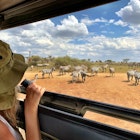
Nov 15, 2023 • 5 min read

Oct 29, 2023 • 12 min read

Zambia travel tips: What you should know before you visit Zambia
We are proud members of the U.S. Peace Corps community and love to partner with our fellow Peace Corps Volunteers, who often have some of the best insights into the culture and authentic travel experiences available in their host country. We asked Lianne Bronzo, a recent Volunteer in Zambia, to share her expertise on travel in Zambia.
Africa is a massive continent hosting a great deal of diversity in terms of people, cultures, and landscapes. Then within each country is even more diversity and uniqueness. Zambia is no exception.
What is it like to travel in Zambia?
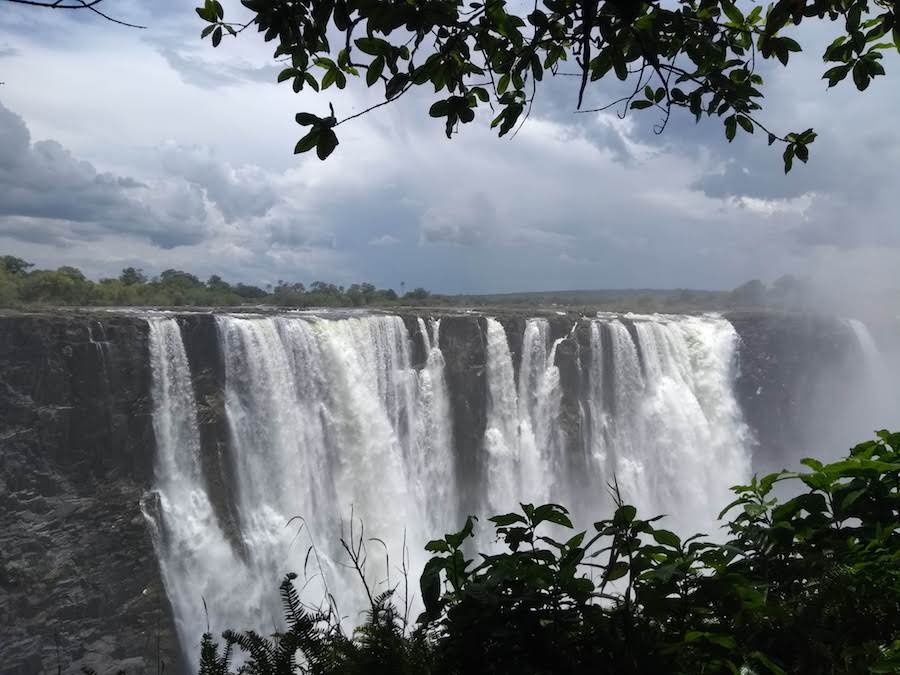
While the most famous landmark is Mosi-o-tunya (the smoke that thunders), most commonly referred to as Victoria Falls , there’s a plethora of pure beauty hidden in pockets spanning the country.
Zambia is about the size of Texas, but traveling between destinations can take much longer due to the road networks and conditions, but that means less construction and more natural landscapes. So even with the logistical challenges, those that choose to venture here will be rewarded with unique scenery and exciting wildlife among little to no tourist crowds.
Although there aren’t any beaches in the landlocked country, Zambia is drowning with rivers, lakes, waterfalls, and even a few natural hot springs.
Perhaps the best part about living in Zambia for the past two years has been getting to know some of the warmest people I’ve truly ever met. People are quick to smile and have taught me so much in terms of hard work, patience, and resilience. I must admit that Zambia is the most difficult place I’ve ever traveled due to the vast distances alone, but it is grossly underrated as a travel destination.
Zambia’s Highlights
Wildlife: Zambia is home to the all of the Big Five, in addition to an abundance of other majestic animals such as wild dogs. Some of the best places for wildlife viewing are South and North Luangwa National Parks , Lower Zambezi National Park , Kasanka National Park (specifically to experience the largest mammal migration in the world!), and Kafue National Park . One may find the safari costs and crowds much smaller than neighboring Tanzania.
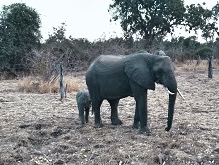
Water: Lake Tanganikya, Lake Bangweulu, and Lake Kariba are some of the large bodies of water suitable for swimming, fishing, boat rides, or just lazing at the beach. The Zambezi River is also a popular spot for water activities.
If you’re itching to chase more than one waterfall, Northern Zambia has got plenty. Kundalila, Chishimba, Kalambo, Kabweluma, and Lumangwe are a few noteworthy waterfalls , but there are plenty more in the watery north. Ngonye Falls is another impressive site with falls spanning 1km in Western Province. Getting to these waterfalls can be tricky as there is little public transport, so hitchhiking, hiring a private taxi, bicycling, or self-driving are the only options. You will be rewarded for these efforts by likely being the only people there to swim in the delightful falls! Most of these places have basic camp sites as well.
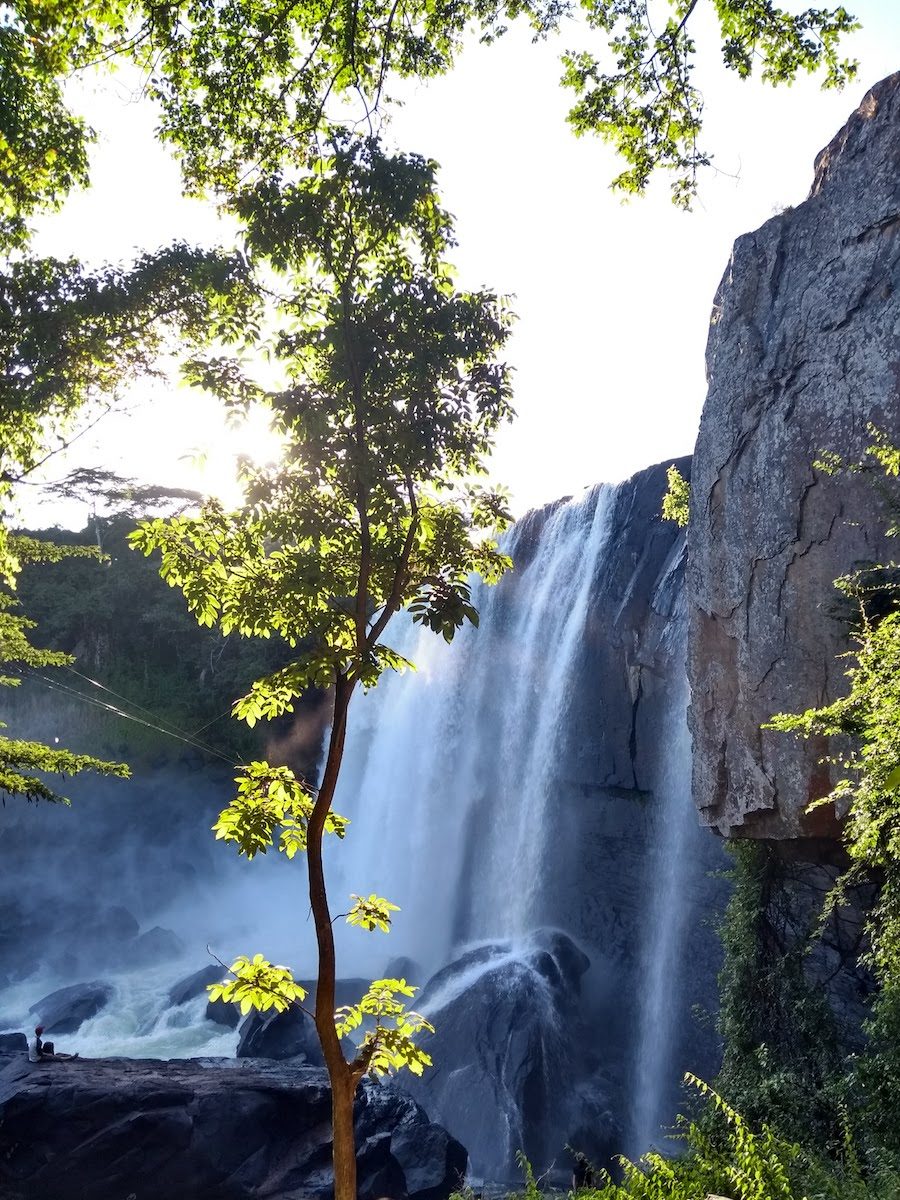
Culture: 73 languages are spoken in Zambia and they all come with their own cultures and traditions. Some tribes have annual festivals such as the Bemba festival (Ukusefya pa Ngwena) and Lozi Kuomboka ceremony. Check out the Zambia Tourism website for details.
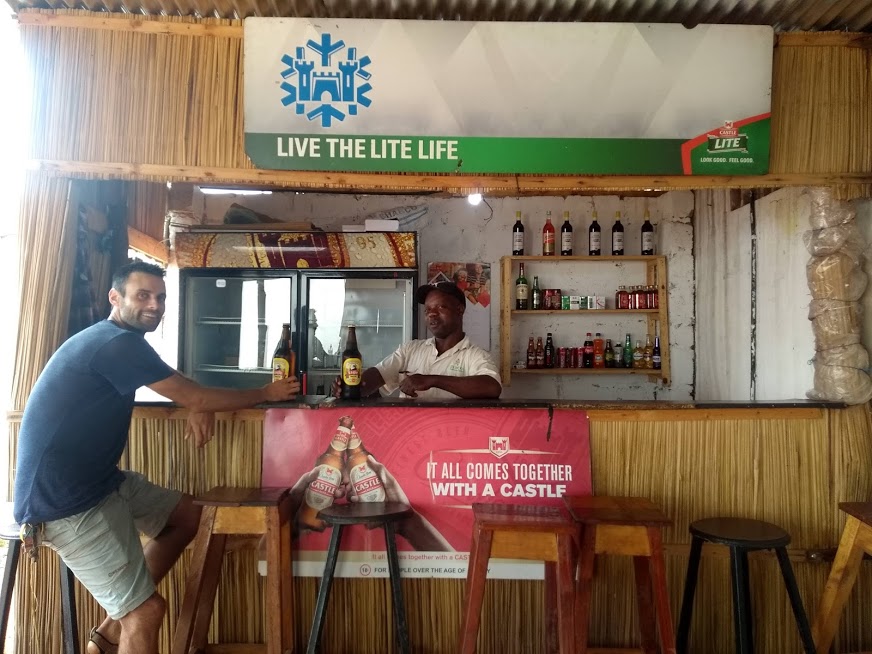
Where to Stay in Zambia
These are some of the best places to stay, recommended by Peace Corps Volunteers, around Zambia:
Where to stay in South Luangwa National Park: Marula Lodge – Affordable accommodations with a friendly staff and discounts for Peace Corps Volunteers!
Where to stay in Lusaka, Zambia: Lusaka Backpackers and Natwanga Backpakers are the most popular places for Peace Corps volunteers.
Where to stay in Livingstone, Zambia: Many of the backpacker places are more or less the same. Cafe Zambezi, Fawlty Towers, Jollyboys Backpackers, and Livingstone Backpackers are the most popular spots.
I recommend Fawlty Towers in Livingstone because they have a nice garden area and pool in the back and offer a free shuttle bus to Victoria Falls.
Where to stay in North Zambia: Lake Chila Lodge is a popular spot for the Mbala volunteers up North. It’s a good stopping point when visiting Lake Tanganikya and Kalombo Falls.
Samfya Marines Beach Lodge is popular amongst volunteers, but may be a bit on the expensive side. It has as private beach.
If you must stop in Nakonde , I recommend Muchinga Exquisite Lodge for a safe and cheap place. I don’t recommend Nakonde at all, but some people stop over en route to Tanzania if traveling by land and not the train.
Practical Zambia Travel Information
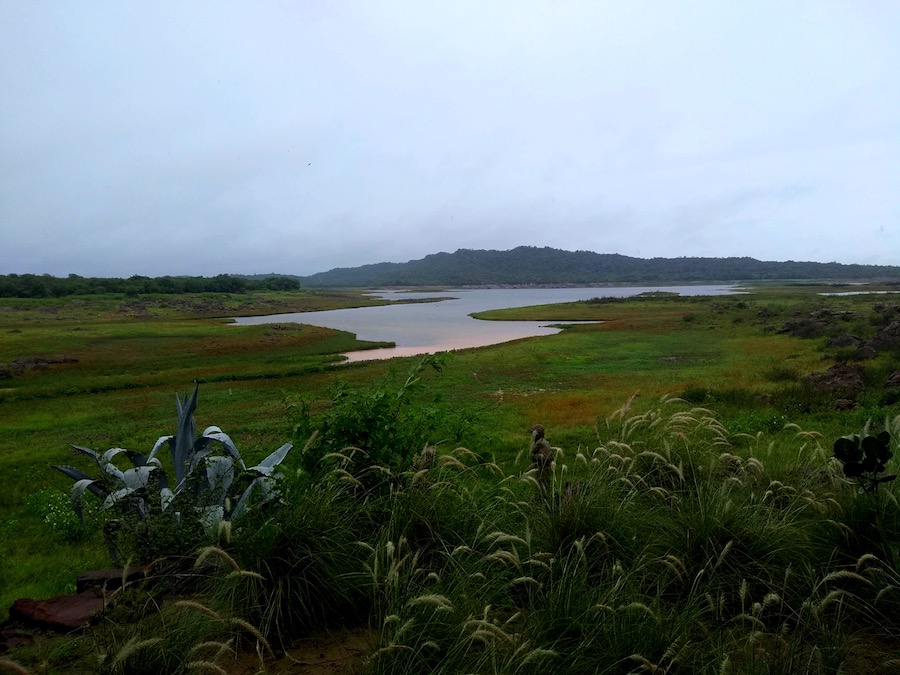
When to visit Zambia
May – July: Cool dry season. You won’t see a drop of rain, but it can get quite chilly at night in Lusaka. August – October: Hot dry season. Fields burn to prepare for planting season to add more to the heat. October is especially brutal, though the dry season is a good time for wildlife viewing. Victoria Falls may not be as powerful toward the end of the dry season. November: First half is dry and then the rains trickle in toward the end of the month, depending on the region (the north is wetter than the south). This is the best time to view the bat migration at Kasanka National Park. December – April: Rainy season. Vibrant green landscapes and mangoes litter the ground, though wildlife is more difficult to spot. Some unpaved roads become impassable during heavy rains.
Costs in Zambia
Like most destinations, budgets can vary wildly. Barebone backpackers can survive on as little as $30 USD per day but the sky is the limit for those seeking luxurious experiences. Most people will find a suitable budget to meet their comfort levels.
Average costs as of March 2020: A bottle of local beer: K10 ($0.66 USD) A filling Zambian meal of nshima (thick maize porridge), fish, and vegetables: K25-50 ($1.60 – $3.20 USD) A western meal: K60-150 ($4 USD – $10 USD) A bed in a dorm room: From K100 ($6.60 USD) A double bed in a very basic lodge: From K150 ($9.95 USD) A comfortable private room in a nicer lodge: From K300 ($19.90 USD) A bus from Livingstone to Lusaka: From K200 ($13.27 USD) but constantly changing due to gas prices
Communication: Cell phones in Zambia
If you have an unlocked phone, it’s easy to get a SIM card for less than a dollar, though you will need to show your passport. From there, you can buy Talk Time to add money for purchasing minutes and data at affordable prices. 4G is available in cities, but the network is spotty otherwise. Airtel and MTN are the two main providers. WiFi isn’t very common.
Getting Around Zambia
Transport will be a large chunk of your budget as well as time spent in the country. But remember that it’s all part of the journey and worth it if you have the time!
Bus: Large “luxury” buses shift people between all major cities with only a few stops, so moderate your fluids intake on long rides! They generally leave on time and it is advisable to purchase tickets at the station the day before. By law, buses are not allowed to operate at night for safety reasons. Gospel music is often played loudly on the bus, so bring some headphones or ear plugs if you are sensitive to loud music.
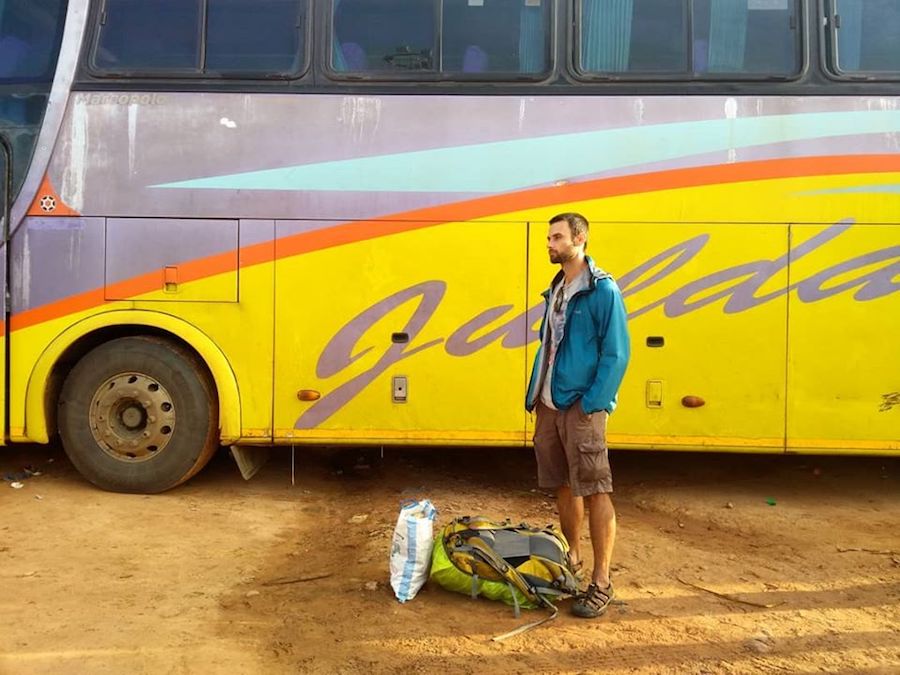
Mini-bus: They only leave when full and make frequent stops along the journey, so this option can be longer and less comfortable than the bus even though the prices are comparable.
Train: There are slow passenger trains from Livingstone to the Copperbelt as well as the TAZARA from Kapiri-mposhi all the way to Dar es Salaam, Tanzania. The trains are notorious for being late, but it is an affordable and safe option for those who have the time and genuinely enjoy train travel.
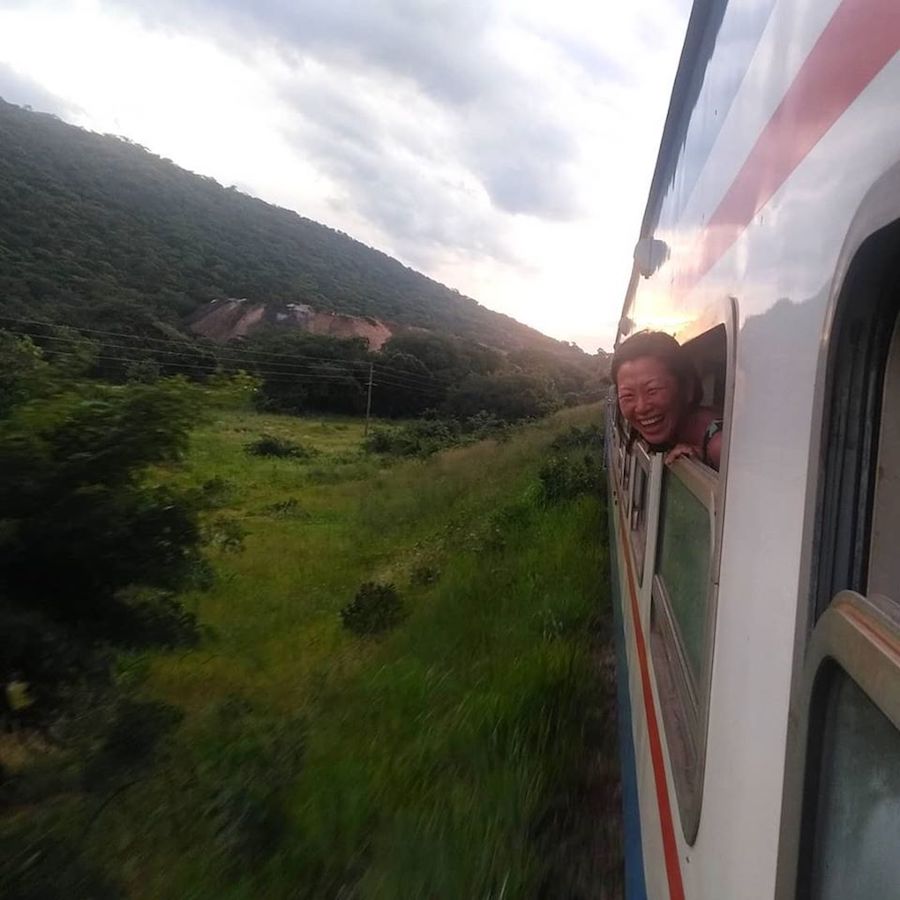
Air: Small planes fly between Lusaka and tourist spots like Livingstone and Mfuwe. It is also possible to charter flights if you’ve got the cash but not the time.
Taxi: Private taxis can be expensive, but cost-effective if split between a group. I recommend using the Ulendo app, which is similar to Uber, when moving within Lusaka.
Self-drive: For freedom and flexibility, rent a car to drive yourself. Some tarmac roads can be laden with potholes and are quite narrow, so it can be intimidating to share the road with semi-trucks. It is not advisable to drive at night. A 4WD is recommended if you plan to veer off the tarmac. Don’t always trust Google maps in terms of travel times – it often will be slower. And remember to drive on the left!
Hitchhiking: I don’t officially recommend hitchhiking, but if you are comfortable doing it and have prior experience, you’ll find it relatively easy and safe hitching in Zambia. Catching lifts is a common form of transportation among locals, especially in areas that lack sufficient public transport. It is standard to pay a fee to the driver, but it is often less than what the bus would cost and significantly more comfortable. Semi-truck drivers are the most likely to give lifts but private vehicles do as well. I’ve met some interesting people while hitchhiking around Zambia. As always, use your best judgment and exercise caution.
Zambia’s Languages
English is one of the official languages and should fare a traveler well in most towns and tourist places in Zambia. However, there are 73 local languages and cultures throughout the country. People generally appreciate it when a foreigner tries to speak the local language, but it can also be insulting to come at somebody using a language that they don’t speak.
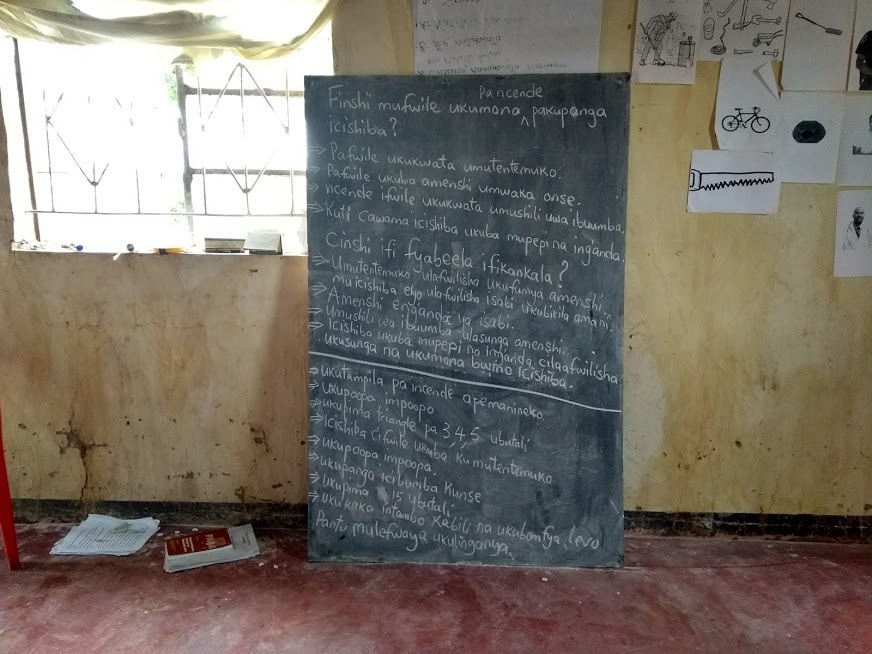
Here’s a general breakdown of the most popular languages in the regions that should be safe to use, but again, there is so much variation even within these provinces.
Lusaka: English, Nyanja. Honestly a little of everything! Southern Province: Tonga Western Province: Lozi Eastern Province: Nyanja Central, Luapula, Muchinga, Northern, and Copperbelt Provinces: Bemba Northwestern Province: Kaonde
Cultural things to know and travel etiquette in Zambia
Cultures vary greatly between tribes, but here are a few general tips that are useful for visitors to know:
– Traditionally, greetings are of utmost importance. When you pass someone in the rural area, acknowledge each other’s presence with a greeting. This isn’t practiced so much in towns, but it’s still important to say hello and how are you before getting right down to business.
– Both men and women should wear long skirts or pants as thighs are sexualized body parts.
– Zambia is a Christian nation, so transport can be trickier on Sundays and some businesses may be closed.
– Eat and shake hands with your right hand only.
– Tipping is not expected but always appreciated.
– If somebody calls you fat, it is a compliment, so try with all of your soul not to feel bad about it. I am a small Asian girl and got called fat on several occasions, though by people I know and not just strangers.
– Be mindful about taking photos of people. First, ask yourself what the purpose of the photo is, if you would take such a photo of a random person in your home country, and what will be done with that photo. Ensure you ask for consent.
Is Zambia safe for travelers?
Zambia is generally peaceful and a very safe place to be. Like anywhere, always exercise caution, especially in towns at nighttime. Try to avoid walking alone at night. Take trusted taxi drivers. Don’t flash around your valuables. You know, basic safety stuff you’d do at home!
It is pretty safe for a woman to travel solo in Zambia, but cat calling and harassment are not uncommon in busy areas. I sometimes feel uncomfortable being squished amongst men in public transport, so opt to sit in the front near the driver if possible. Befriending a woman nearby not only helps alleviate the situation if someone is bothering you, but Zambian women are generally strong and cool to get to know!
Homosexuality is illegal in Zambia unfortunately. LGBT travelers may find it difficult to have to hide their identity. Since I cannot speak to the experiences of LGBT individuals, I asked a friend what his advice would be for queer travelers in Zambia. He advised to avoid public displays of affection (this goes for hetero couples as well). If you want to be extra cautious, disable dating apps. He also mentioned that nose rings may be a signal for homosexuality, so taking it out may be a good idea, particularly if you are male-identifying.
Staying Healthy
I am not a doctor trained to give health advice, but it is a good idea to do your research and perhaps see a travel doctor before coming to the region. Some concerns travelers may encounter are malaria, tuberculosis, Bilharzia, giardia, and traveler’s diarrhea.
Some medications can be found locally and are cheaper here than your home country. Prevention is key! Opt to stay at places that have bed nets, drink clean water, and keep a small medical kit with a thermometer and malaria test kit. Oral rehydration solution packets can also be handy.
*Take 10% off any travel-size bug spray at rangerready.com with code IntentionalTravelers10 >

General Zambia Travel Tips
– Always travel with toilet paper, hand sanitizer, and small change. Sometimes it can be difficult to break 100 kwacha bills.
– Look out for citenge material or traditional fabric. You can get clothes and accessories tailored affordably. Makes for a great souvenir or gift!
– When at produce markets, it is standard to ask for a “top up” if you buy a lot of things. Just say “mbasela?” and the vendor may laugh and throw in an extra banana.
– You must pay for plastic bags at many supermarkets, so that’s another incentive to carry around a reusable bag!
– Download the iOverlander app for information about landmarks and accommodation. It’s helpful even if you are not driving in the region.
– Join the Mzungu group chats to connect with fellow travelers in the region.
– If you haven’t already, educate yourself about the white savior complex and poverty porn and keep these in mind if you are seeking to volunteer or go on “village tours” in the region.
Mwaiseni ku Zambia! Welcome to Zambia.
✈️ Protect your Zambia trip with Travel Insurance – We’ve started using Nomad Insurance by Safety Wing for affordable evacuation, international medical, and trip coverage.
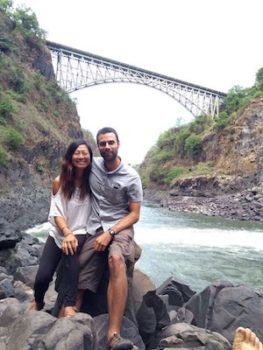
You might also like:
– 6 Places You Must Visit in Malawi – Off the Beaten Path Small Town Digital Nomad Destinations – A Quick Guide to Couchsurfing – 5 Selfish Benefits of Peace Corps
Like this post? Pin it for later or share with friends!
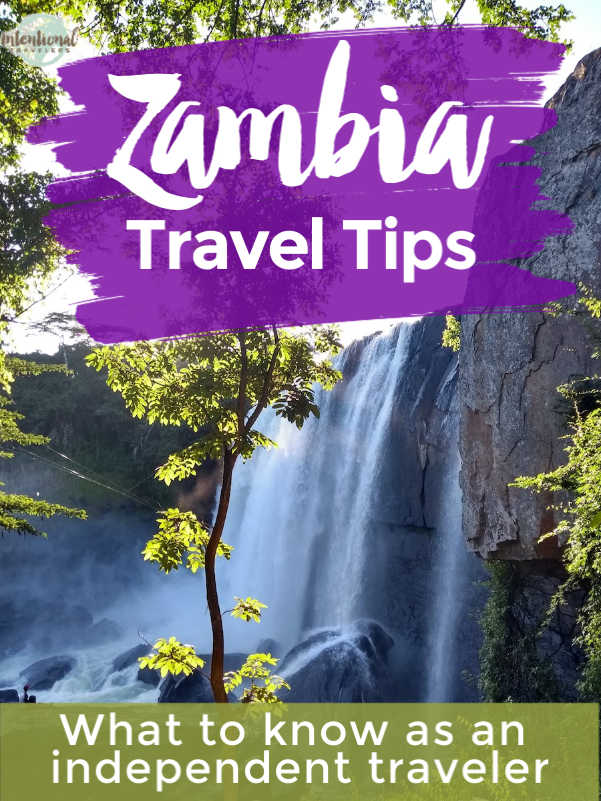
Similar Posts
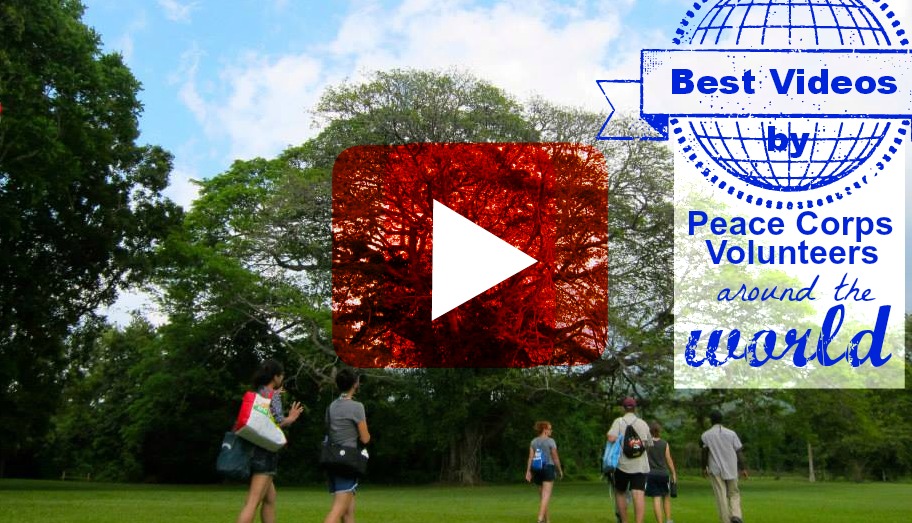
Best Videos by Peace Corps Volunteers Around the World
For decades, dedicated Peace Corps volunteers have ventured to all corners of the globe, bringing their passion, skills, and care to communities in need. Beyond their invaluable on-ground efforts, some volunteers have also captured their experiences in vivid detail, offering us a glimpse into the diverse cultures, challenges, and triumphs they encounter. As Returned Peace…
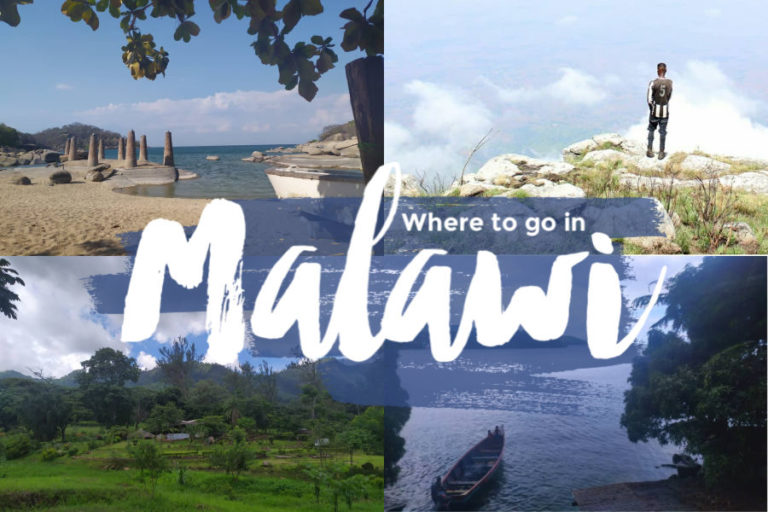
6 Places You Must Visit in Malawi
We are proud members of the U.S. Peace Corps community and love to partner with our fellow Peace Corps Volunteers, who often have some of the best insights into the culture and authentic travel experiences available in their host country. We asked Madisen Hughes, a former Volunteer and current resident in Malawi, to share her…
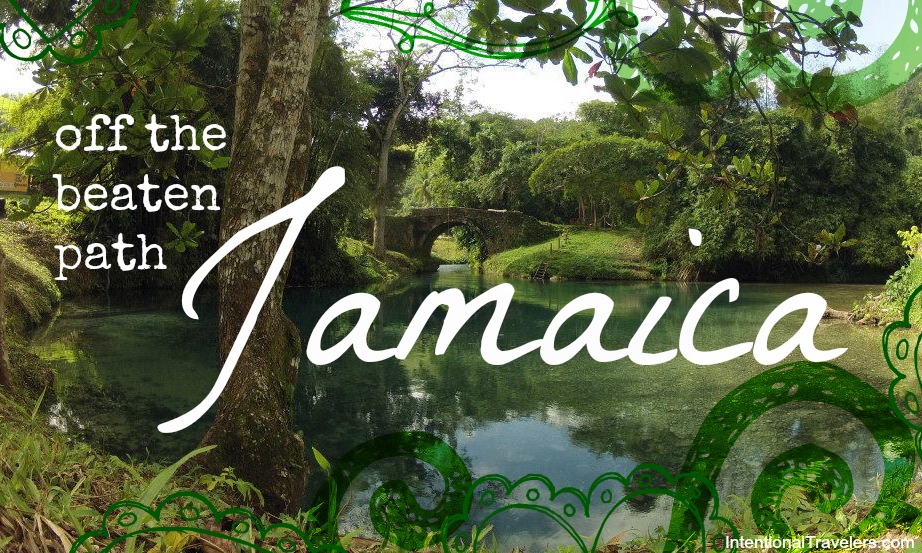
Favorite Places to Visit in Jamaica: Off the Beaten Path
Having lived and served as Peace Corps Volunteers for over two years in Jamaica, we’ve had the opportunity to explore a fair amount of the island. Our experiences ranged from weekend trips on our limited PC budget to the more indulgent vacation days shared with our visiting family and friends. With a strong Volunteer network…
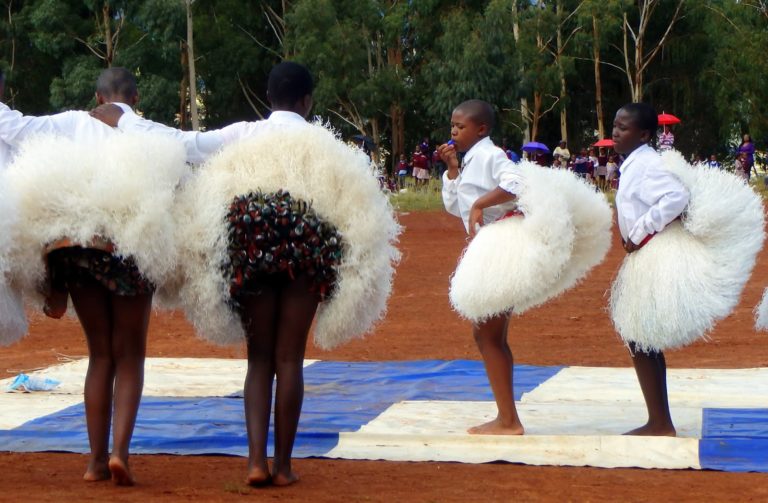
5 Lessons We Can Learn From Basotho Women
When we were Peace Corps Volunteers, our appreciation of cross-cultural exchange really grew. In an effort to promote cross-cultural understanding through our blog, we share posts from our fellow intentional travelers who have interesting stories and important lessons from abroad. Today’s guest post comes from Beth Spencer, a Peace Corps Volunteer in Lesotho, Africa. We…
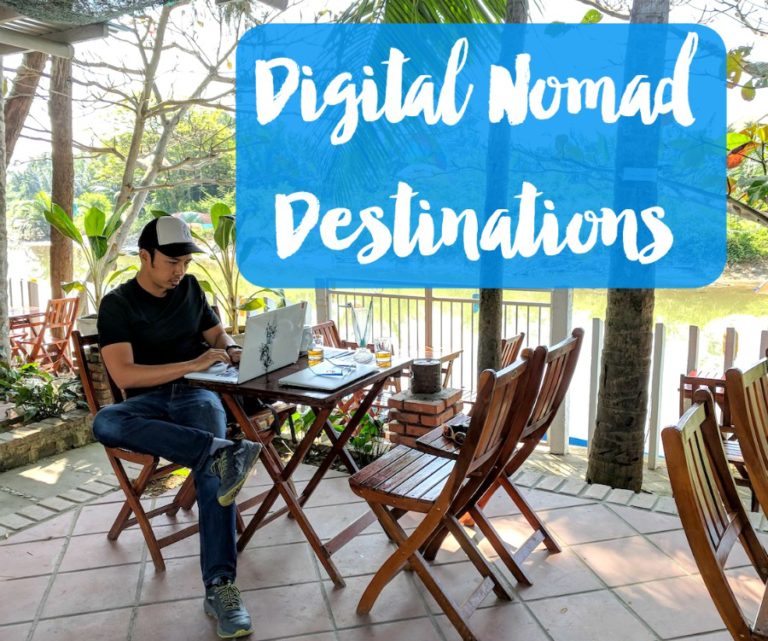
Off-the-beaten-path Small Town Digital Nomad Destinations
If you’re like us, finding the best small town destinations and off-the-beaten-path gems is a big reason why we love working remotely. Since becoming digital nomads in 2014 and trying out various places to live and work abroad, we’ve learned an important lesson: Some of the big “digital nomad hubs” are not really our style….
Zambia is the least place I would consider as a travel destination. However, your post has enlightened me on fun things to do on my visit
ZAMBIA is situated in Central Africa, your headline states east Africa.
Hi and thanks for visiting our blog and taking the time to write. Can you share more specifically where you are seeing that error in our post? I’m not finding it in the title, headings, or anywhere else in our text.
Leave a Reply Cancel reply
Your email address will not be published. Required fields are marked *
This site uses Akismet to reduce spam. Learn how your comment data is processed .
- Group Enquiry? NEW
Places to Visit in Zambia
- Places To Visit
Zambia Tourist Attractions
Here is the list of best places to visit in zambia:.
- Livingstone
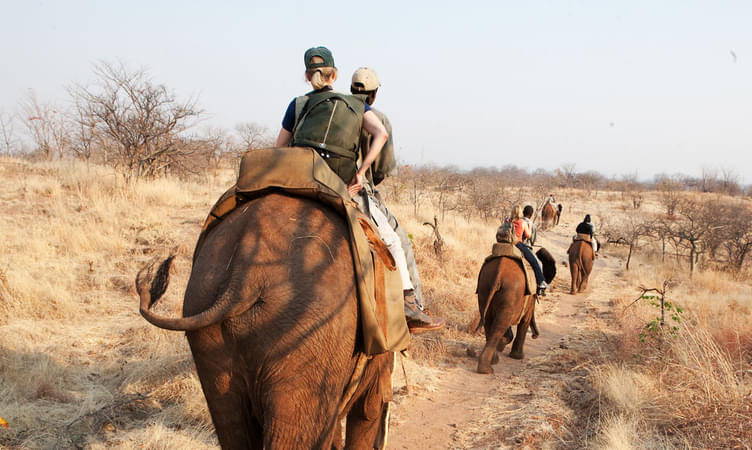
Livingstone is one of the oldest and most popular places in Zambia. Located in the Southern Province, this city was the capital of Zambia till 2012, after which Lusaka became the capital. It shares its borders with Zimbabwe and is a city that is thriving with tourism and activities. Livingstone is the tourism centre from which people can explore the world-famous Victoria Falls, which is one of the most famous places to visit in Zambia. The presence of these falls has also led to the formation of tropical gardens and brooks in the area that you can explore on foot. The city itself is home to several gardens and picnics spots as well. Apart from the stunning Victoria Falls, you can also check out places like the Mosi-oa-Tunya National Park where zebras and deer roam free and the Livingstone Museum which is a hub of local history, archaeology and ethnography. The Railway Museum is also an interesting attraction that outlines the history of the railway in the area. You can spend several days exploring the many adventures that Livingstone has to offer. This includes travelling to the Livingstone Islands from where you can get a clear view of the Victoria Falls, exploring the area around this majestic waterfall on foot or hiking through the landscape of Livingstone. The city experiences a hot semi-arid type of climate, very hot summers, cool winters and intense rainy seasons. The average temperature varies between 6 degrees Celsius at its lowest in winter and 43 degrees Celsius at its hottest during the summer season.

Kitwe is a bustling industrial city located in the northern part of Zambia and in the South-Central part of Africa. It is one of the most developed commercial centres in the country that is a collection of small cityships and several suburban areas. Due to the city being primarily an industrial centre in the copper belt, there is little natural beauty that you can enjoy here. However, on the outskirts of Kitwe, you can drive through vast stretches of grassland, see waterfalls and mountains in the distance and enjoy picnics in the manicured gardens that are built all over the city. While the copper mines in the city are interesting places to visit, you can learn more about the development and history of this city in the local museums and galleries. You can also visit the famous Chembe Bird Sanctuary and the Mindolo Dam, which are some of the best places to visit in Zambia. The serene natural beauty in the outskirts of Kitwe allows you to enjoy birdwatching, picnics, treks and hikes in the grassy terrain. Exploring the beautiful Nkana Mines, which is the main activity of the cityspeople is also an interesting activity to indulge in. You can also engage in several watersports such as boating, swimming and jet skiing when in Kitwe. Kitwe experiences subtropical humid weather throughout the year. It is generally warm throughout the year, with intense monsoons and dry winter seasons.
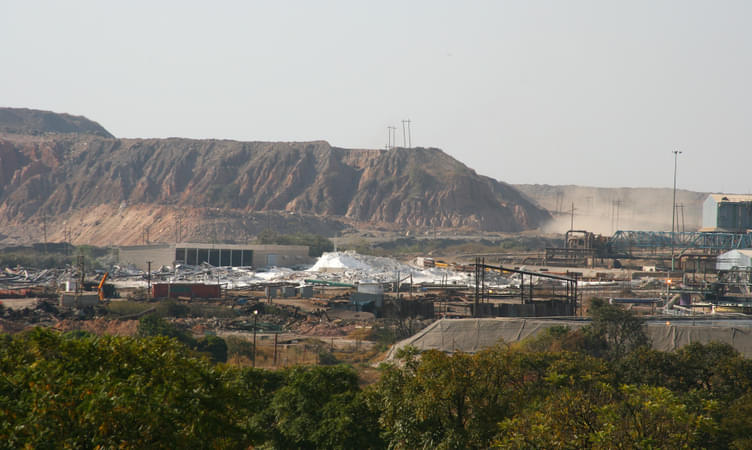
Chingola is one of the newest citys to be built in Zambia’s Copperbelt Province, in order to cater to the Nchanga copper mine. Chingola was established in 1943, and is one of the most picturesque citys, with innumerable gardens, flowers, clubs, hotels and stadiums. It is located near the northern border of Zambia, 411 km from Lusaka. Chingola is one of the highest rainfall-receiving places in Zambia, which has led to the flourishing of many tropical trees, plants and the development of colourful gardens that are well-maintained by the authorities. It is surrounded by the natural beauty that you can explore on walks, hikes and invigorating treks through the region. Some of the most exciting places you can explore when in Chingola include the Kafue River, which has a hippo pool, home to several families of these majestic animals. You can also travel 60 km from the city to visit the Chimfunshi Wildlife Orphanage, which rescues and provides sanctuary to orphaned chimpanzees. On the road to Kitwe, you can also visit the Five Mile Rock, which is one of the most popular Zambia tourist attractions. Chingola is a vibrant city with golf clubs, swimming clubs, rugby club, tennis, hotels, cinema halls, gardens and shopping malls. You can spend your time soaking in the local culture, exploring the stunning flower gardens in the city and indulging in sports in the various clubs in city. The warm and humid city of Chingola received a large amount of rainfall throughout the year, making it one of the wettest places in Zambia. The average temperature stays at around 21.1 degrees Celsius, making the weather pleasant and comfortable.
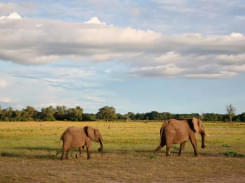
Chipata, formerly known as Fort Jameson, is one of the fastest growing urban centres in Eastern Zambia. While previously it was the capital of old Zambia (North-Eastern Rhodesia), today, it is the administrative capital of the Eastern Province of the country. It is a popular stop for refreshments and refuelling for people travelling east to Malawi or to Lundazi in the north. Chipata Is a typical Zambian city with bustling marketplaces, mountains on the horizons and a unique local natural beauty that you can explore. This includes 4 beautiful streams that drain into the Luangwa River. While the city itself is filled with universities, golf courses, gardens, shopping malls and local markets, you can also explore the suburbs where the Ngoni people live. This indigenous tribe celebrates the Ncwala ceremony every year in February, where they commemorate the first harvest of the season. Apart from exploring the rivers, streams and suburbs, some of the most popular things to do in Chipata includes visiting the Central Mosque and the Kanjala Hills. Markets such as the Kapata Market are also representative of the thriving culture of Chipata. Chipata experiences a sunny and warm climate throughout the year, with January experiencing the highest amount of rainfall. The average temperature in summer, which lasts from September to December is around 31 degrees Celsius while in winter (June – July), the average temperature is 25 degrees.
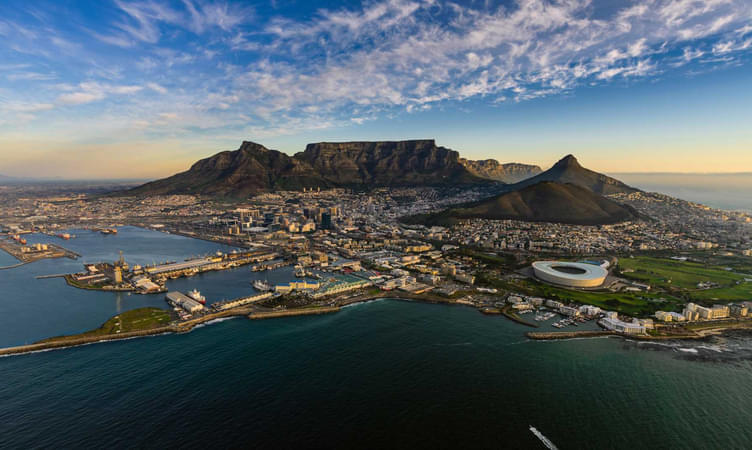
Best of South Africa

Located in the Northern Province of Africa, Kasama is a thriving city that can be found 856 km to the north-east of Lusaka. The city is located on the tip of the famous Lake Tanganyika and on the central-southern African plateau. Kasama is one of the most beautiful places in Zambia, full of lakes, rivers, waterfalls and valleys. Five major rivers flow through the district including Lubansenshi, Chambeshi, Luombe, Lukulu and Lukapa, which are major Zambia tourist attractions. You can also, of course, explore Lake Tanganyika when you are in Kasama and check out the stunning Chishimba Waterfall that can be found on the Lumbee River. Some of the oldest human relics can be found in Kasama. Cave paintings from the Stone Age have been discovered in the area and are some of the major attractions for tourists. Chishimba Falls is also one of the popular tourist attractions in Kasama. Exploring the many rivers and waterfalls in Kasama is one of the most exciting things you can do here. The landscape is such that it allows for trekking and hiking expeditions in the outskirts of the city as well. Kasama is also home to the Bemba ethnic group, whose lifestyle and culture you can experience when you are visiting. The city experiences a warm, and dry climate with heavy rainfall only during the month of December. During summer, the average temperature remains at around 28 degrees Celsius while in winter, the average temperature is 11 degrees Celsius.
.jpg?gravity=center&width=752&height=450&crop=fill&quality=auto&fetch_format=auto&flags=strip_profile&format=jpg&sign_url=true)
Best of Mauritius

Lusaka is the capital city of Zambia and one of the fastest developing urban centres in all of Central Africa. It is located on the southern side of the central plateau at an elevation of 4,196 feet above sea level. It has a well-developed network of highways from the north, south, east and west, making it a highly accessible city from all parts of the continent. While Lusaka itself is a developing city with roads, shopping malls and tall buildings, the outskirts of the city is a place of exceptional natural beauty that people escape to for a respite from urban living. One of the most popular natural landmarks outside of Lusaka is Lake Kariba, which is ideal for boating trips, picnics and excursions. The area around Lusaka is surrounded by picturesque mountains on the horizon, large stretches of savannah land and peaceful water bodies, ideal for short trips. When you are exploring the city, you can visit several tourist attractions and local hotspots such as the Lusaka National Park, the Sunday crafts Market, Chaminuka Game Reserve and the Kalimba Reptile Park. You can also get a taste of the local history at the Namwane Art Gallery and the National Museum. Activities such as hiking, wildlife tours, safaris and camping adventures, eco-tours and road trips are popular ones enjoyed by tourists in Lusaka. Exploring the historical sites and museums on foot throughout the city is also a fun activity that can be enjoyed in Lusaka. Due to the elevation at which the city is located, Lusaka enjoys a humid subtropical climate. The coldest month of the year is July, when temperatures drop to 14 degrees Celsius at night, whereas the hottest month of the year is October.

Best of Africa

Ndola is the third-largest city in Zambia in terms of population. It is also located in the Copper-belt region along with Kitwe and is actually the capital of the Copperbelt Province. It is located at a distance of 10 km north of the border with DR Congo. John Edward “Chiripula” Stevenson founded this quaint industrial city in 1904. While Ndola is a peaceful industrial city with mining being the main occupation of the residents, just outside the border you can find endless stretches of grassland, a beautiful lake that has formed at the bottom of a crater and the Nsobe Game Camp, which is home to some of the beautiful local animals such as giraffes and antelopes. The mine at Ndola is the prime attraction in the city. You can also learn about the relatively young history of the city in the Copperbelt Museum. You can also visit the Mupapa Slave Tree when you are in Ndola, which is a grim monument in remembrance of the slave-trading that used to take place even a few years back in the region. Ndola has several cafes, restaurants and museums that you can explore when you are travelling through this city. Each place is a reminder of the history of Ndola, while the cafes serve delicious local food, as well as Italian and French delicacies. You can visit the Copperbelt Museum and the Dag Hammarskjold Memorial. Ndola enjoys a humid subtropical climate, with the hottest months being October, November and December. Temperatures rise to over 40 degrees Celsius during this time of the year. The coldest months are June and July with the average temperature dropping down to 7 degrees Celsius. The area received heavy rainfall during December.
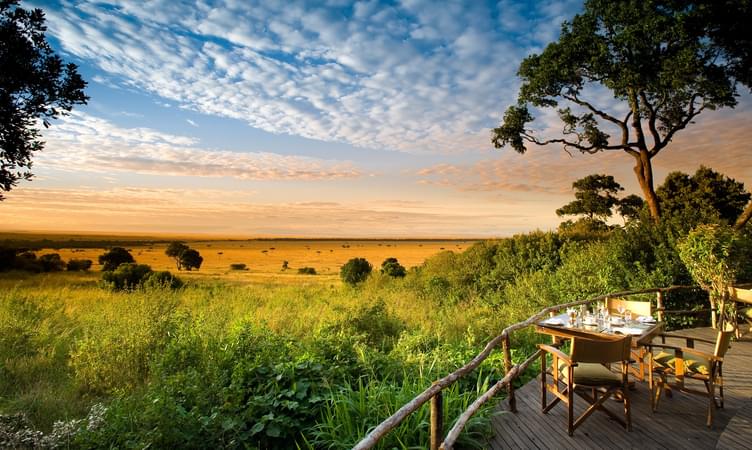
Best of Kenya

Kabwe is another quaint and beautiful Zambian city that was founded in 1902 when zinc and lead deposits were discovered in the land. Today it is the capital of the Zambian Central Province, located 69 miles from the capital city Lusaka. Kabwe has been a mining city since its establishment in 1902. It was one of the first places in Zambia to get railways and was an important political place. However, today, it is mostly barren land, with very little natural beauty to speak out. On the outskirts, however, you can find extraordinary natural beauty in places like the Lukanga Swamp, the Mulungushi and the Lunsemfwa Rivers and the Chikungunya Hills. When touring through Kabwe, you can check out local attractions such as the Mulungushi Rock of Authority, the Mulungushi University, the Broken Hill Man Memorial which is the place where an ancient human skull was discovered, the local mall, golf course and library. Apart from visiting the local university and the memorial sites, along with the monuments and mines, some of the most exciting activities you can do in Kabwe include golfing, fishing in the Lukanga Swamp, exploring the Wonder Gorge in Lunsemfwa River and hiking on the Broken Hill, which used to be an erstwhile mine. October, November and December constitute the hottest months of the year when temperatures rise to 38 degrees Celsius during the day. July is the coldest month when the average temperature remains at 9 degrees Celsius. The area receives rainfall during December.
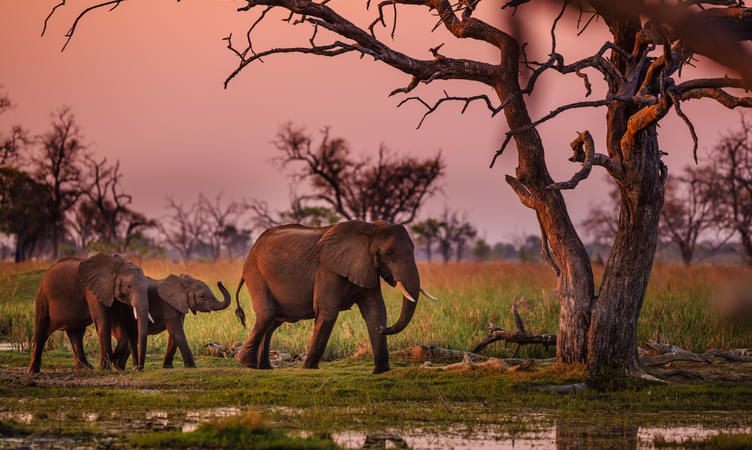
Best of Botswana
Mufulira is another city in the Copperbelt Province of Zambia that was established in 1930. It is the administrative capital of the Mufulira District. The name of the city translates directly to “Place of Abundance and Peace” and shares its international border with DR Congo. Mufulira is primarily a mining city, where the residents have built their lives around the mine. While the city itself is a functional urban unit, you can travel to the outskirts of Mufulira where you can check out rolling hills, valleys, rivers and much more where you can enjoy picnics and treks. When you are out exploring the city, apart from the massive mining structures in Mufulira, you can check out the Chembe Bird Sanctuary and St. Lawrence Catholic Church, which are the two main tourist attractions. Birdwatching in the Chembe Bird Sanctuary is a very popular activity in Mufulira. You can catch sight of many different and colourful migratory birds that frequent the sanctuary. Mufulira is also surrounded with rugged hills and valleys that are ideal for trekking and hiking. Mufulira experiences warm weather throughout the year. During the monsoon season, which occurs primarily during December, the area sees a substantial amount of rainfall.
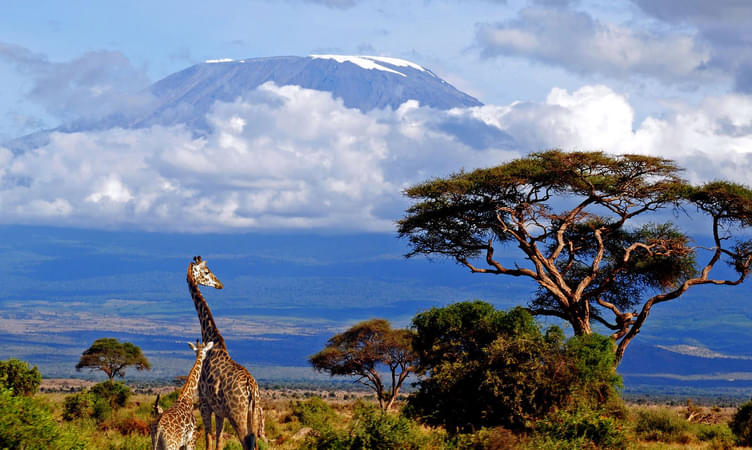
Best of Tanzania

Luanshya was discovered in the early part of the 20th Century when William Collier, an explorer, shot an antelope on the banks of the River Luanshya and in the process, discovered a rich deposit of copper in the area. Today, the city is an important site on the Copperbelt Province, located close to Ndola and a centre of sports, industry, culture and history and is one of the most interesting places to visit in Zambia. Luanshya, also known as the wall-fence city, is known for the brilliant architectural layout of the streets and the many trees that can be found in all corners of the settlement. Due to the proximity to the Luanshya River, there have developed many gardens and flowering plants that are spread throughout the cityship. Luanshya is home to the United Church of Zambia, one of the oldest churches in the country. It is also a city that has many gardens, picnic spots and grasslands where you can enjoy rides and tours. The city also has a massive golf course as well as several vibrant markets. Some of the most popular activities that tourists can enjoy in Luanshya include hiking and trekking in the outskirts, golfing in the golf course, shopping in the many markets that sell local goods and items as well as mine tours in the local mine that is at the centre of society in Luanshya. Luanshya has an extensive dry season which is hot and windy, whereas the monsoons are overcast and rainy. It is relatively warm throughout the year.
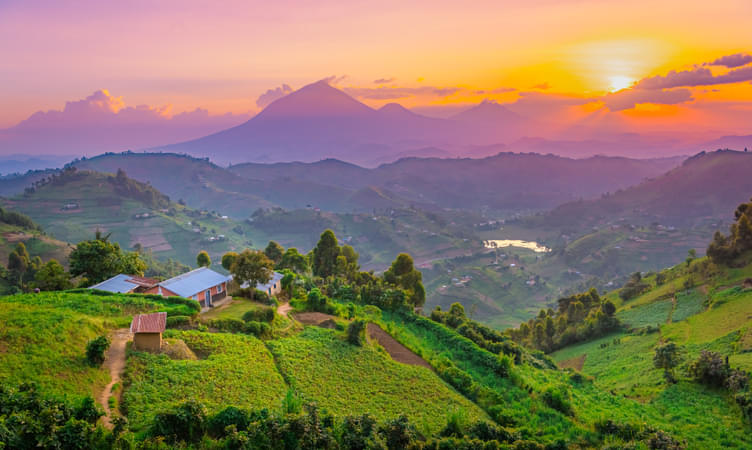
Best of Uganda

Other Attractions
Victoria falls.
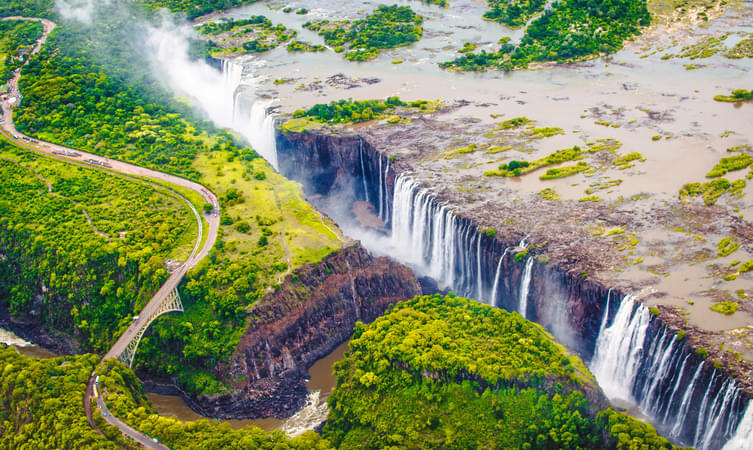
Sioma Ngwezi National Park
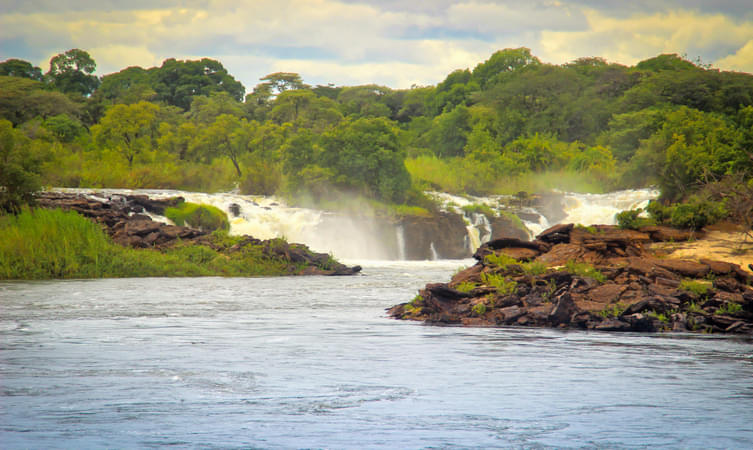
South Luangwa National Park
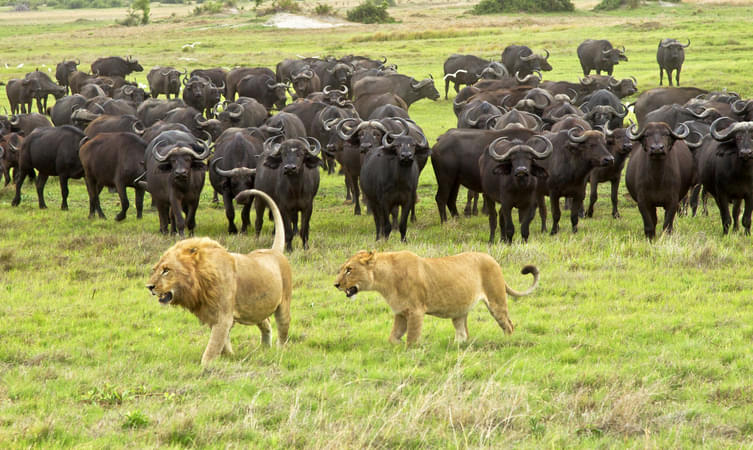
Lower Zambezi National Park
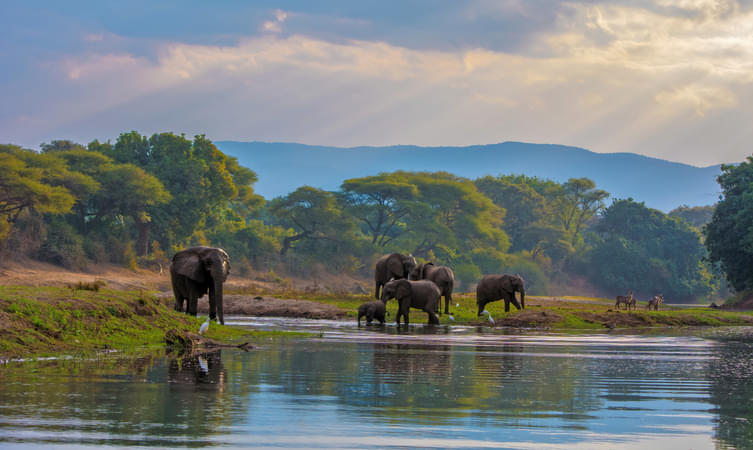
Shiwa Ngandu Manor House
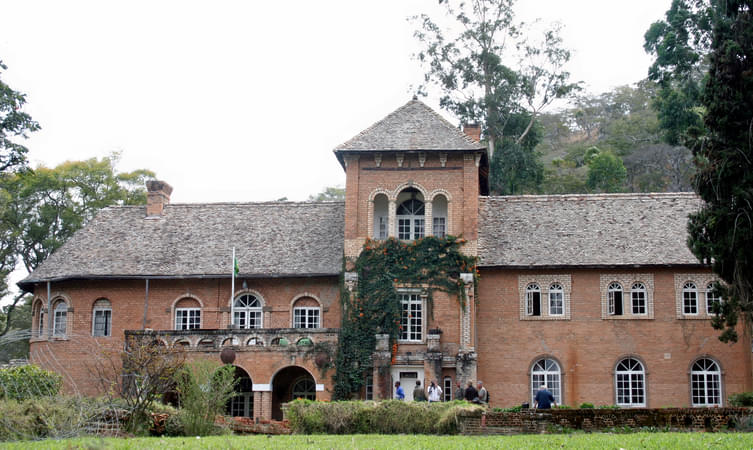
Kafue National Park
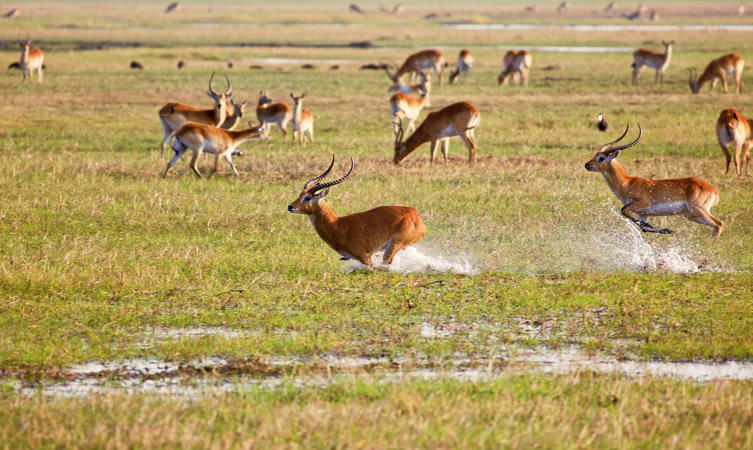
Lake Kariba
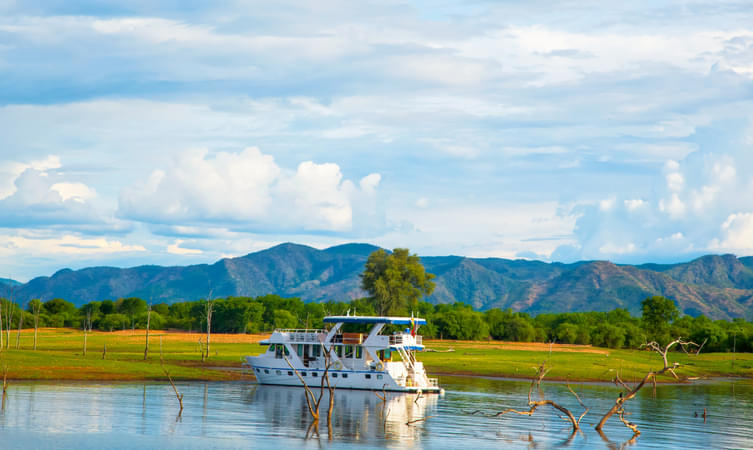
Lake Kashiba
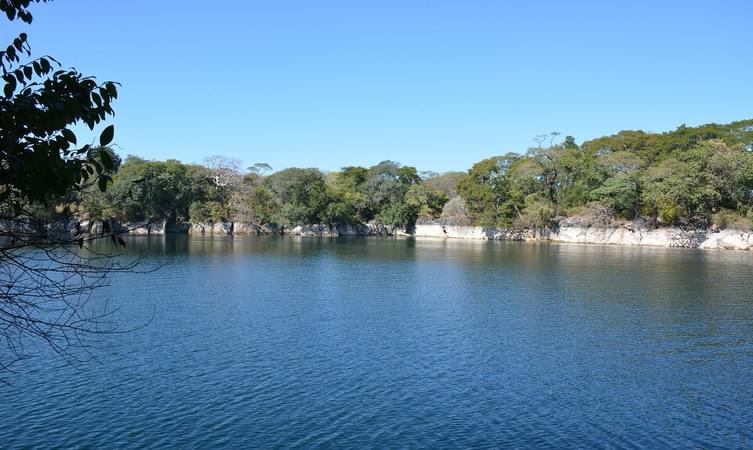
Blue Lagoon National Park
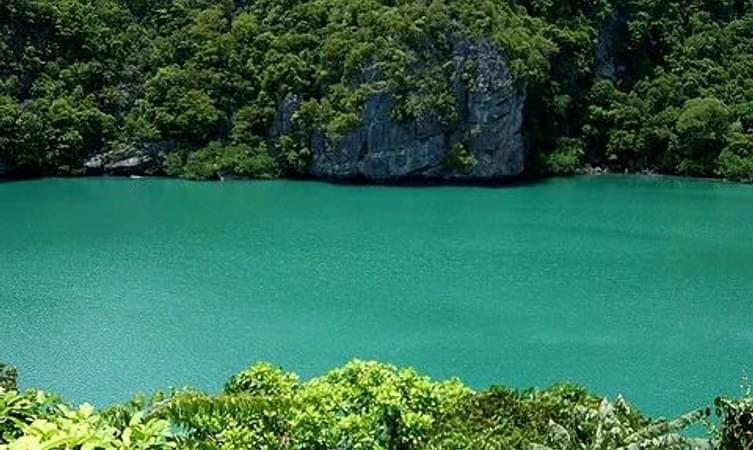
Mosi Oa Tunya National Park
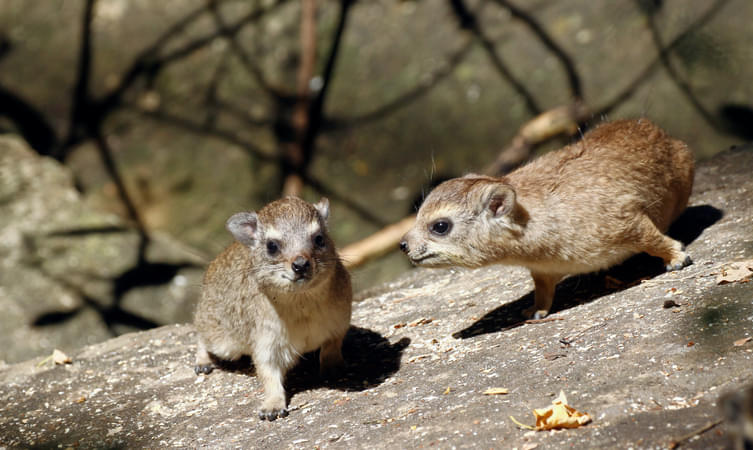
Kasanka National Park
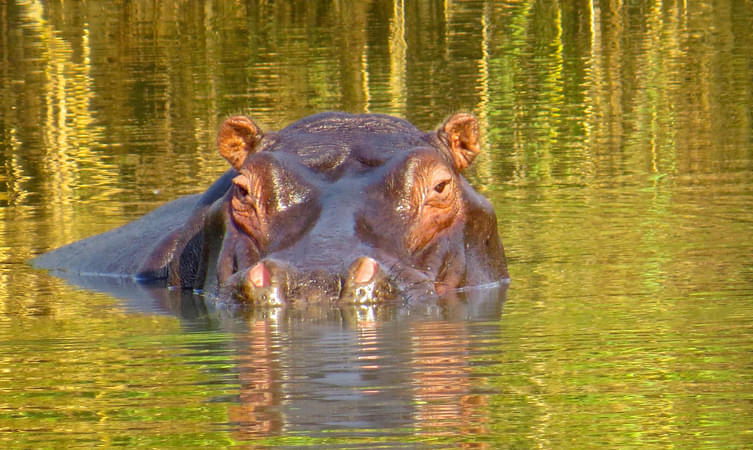
Nsumbu National Park
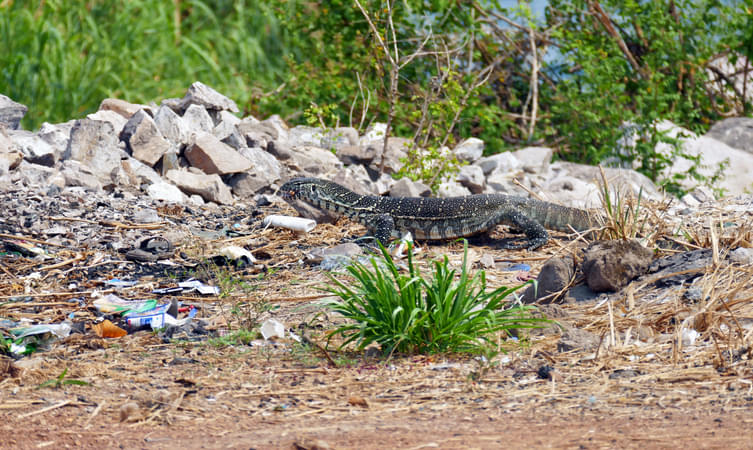
Samfya Beach
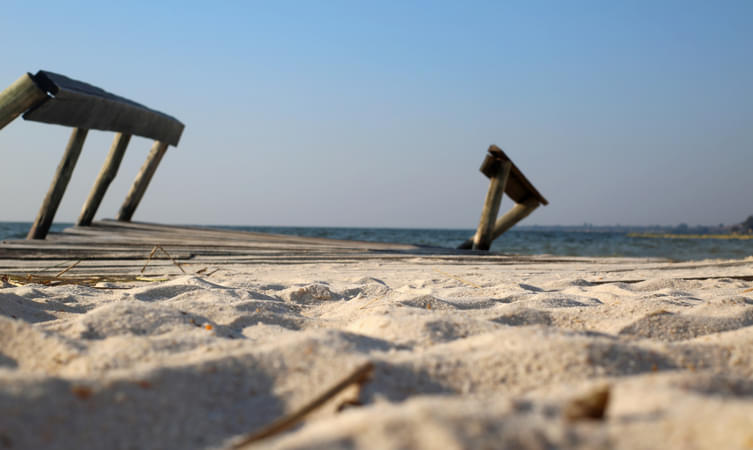
The Copperbelt
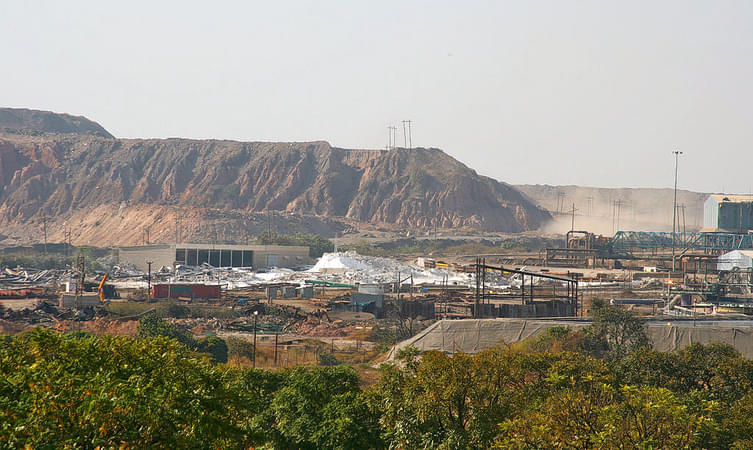
Nyika Plateau National Park
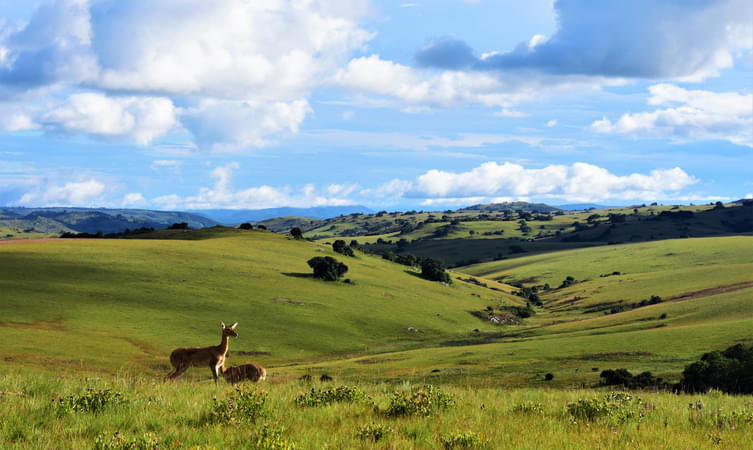
Itezhi Tezhi Dam
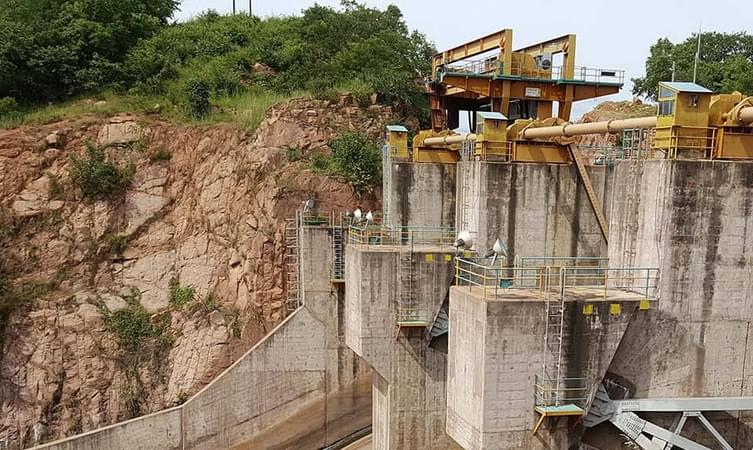
People Also Ask About Zambia
Which are the best places to visit in zambia, which are the best safari destinations in zambia, which are the best wildlife parks in zambia, what is the best time to visit zambia, how to reach zambia, is zambia worth visiting.
-min.jpg?w=305&h=230&dpr)
Popular Nearby Places Around Zambia
More things to do in zambia, more on zambia tourism, popular related destinations.
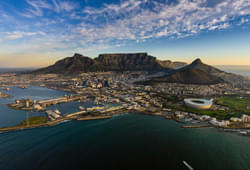
Best Domestic Packages
Best international packages, domestic honeymoon packages, international honeymoon packages, places to visit in india, international places to visit, things to do in india, international things to do, popular on thrillophilia.
- We assure the privacy of your contact data.
- This data will only be used by our team to contact you and no other purposes.
Your enquiry has been received successfully. Our destination expert will reach out to you soon!

IMAGES
COMMENTS
Discover the best of Zambia, a friendly country with awe-inspiring natural wonders, wildlife, waterfalls and safari experiences. Explore the latest news, articles and videos from Zambia Tourism and plan your trip with visa information and travel agents.
Zambia Tourism Agency (ZTA) is a statutory body under the Ministry of Tourism that markets and regulates the tourism industry in Zambia. Find out more about ZTA's vision, mission, structure, services, and contact details on its official website.
Discover Zambia's attractions, wildlife, culture, and adventure with Zambia Tourism Agency. Find travel information, tips, and updates for your perfect Zambia vacation.
Discover the beauty, diversity and wildlife of Zambia, one of the most unspoilt countries in Africa. Explore the Victoria Falls, the Zambezi River, the national parks, the lakes and the urban areas with Zambia Tourism.
Find out the best attractions and activities in Zambia, from Devil's Pool and Victoria Falls to national parks and museums. Compare ratings, reviews, prices and bookings for safaris, tours, rafting, shopping and more.
Explore Zambia's wilderness, wildlife and culture with Lonely Planet's expert tips and recommendations. Find out the best things to do, attractions, activities and places to stay in Zambia and beyond.
Discover Zambia's diverse cultures, natural wonders and wildlife attractions beyond safari. Learn how to swim at Victoria Falls, snorkel in Lake Tanganyika, attend a festival, eat local cuisine and more.
Discover Zambia is a travel company that offers information and services for visiting Zambia, a peaceful and diverse country with rich wildlife and culture. Explore their blog for stories and tips on Zambia's attractions, such as Kafue National Park, Ntumbachushi Falls, and Mutomboko Ceremony.
Discover the best things to do and see in Zambia, from the stunning Victoria Falls to the diverse wildlife and wilderness of its national parks. Learn about the best time to visit, the activities to enjoy, and the rare and endemic species to spot in this landlocked safari destination.
Learn about Zambia, a landlocked country in Southern Africa, renowned for its natural beauty and rich cultural heritage. Discover its attractions, such as the Victoria Falls, its national parks, its rivers and lakes, and its diverse ethnic groups and festivals.
Learn about Zambia's geography, history, culture, economy and attractions, from safari opportunities and Victoria Falls to diverse ethnic groups and languages. Find out how to get there, where to stay, what to eat and drink, and how to stay safe and healthy.
Discover the best places to visit in Zambia, from the majestic Victoria Falls to the wilderness of Kafue National Park. Find out about the wildlife, culture, history and adventure that Zambia has to offer.
Some travelers noted that Zambia had waived visa fees for several countries, including the US, UK, and Australia, as of 2021. Typically, a visa on arrival allows for a stay of up to 90 days. For those entering from neighboring countries like Zimbabwe, a single-entry tourist visa on arrival was mentioned, with no advance application required.
Learn about the awe-inspiring beauty and grandeur of Victoria Falls, the greatest curtain of falling water in the world, on the Zambezi River. Discover its formation, history, best time to visit, and various ways to experience the adventure capital of Southern Africa.
And certainly we would rank this breathtaking waterfall - the world's largest curtain of falling water - first among Zambia's tourist attractions. 57 Victoria Falls Tours. 2. Take a Night Drive in South Luangwa NP. Leopard walking. South Luangwa National Park is Zambia's most popular national park.
Discover Zambia's stunning wildlife, unspoiled landscapes, and friendly people in this guide to the best places to visit. From Lusaka to Victoria Falls, South Luangwa National Park, Kafue National Park, and more, you'll find tips on where to stay, what to do, and how to get there.
Destination Zambia beams with a thousand unique tourism endowments. Hosts the largest Mammal migration, where over 10 million fruit eating bats converge in the Kasanka National Park. Africa's second largest Wildebeest migration in the Liuwa National Park. Natural Pool at the edge of the Victoria Falls (Devil's Pool)
ZambianTravel.org is a comprehensive tourism portal and advisor for Zambia, designed to provide travelers with all the information they need to plan a perfect trip to the country. The website offers a wealth of information on Zambia's culture, history, attractions, and activities, as well as practical tips on visa requirements, transportation ...
Discover Zambia's waterfalls, wildlife and culture with this suggested route from Lusaka to Livingstone. Learn about the country's history, art and cuisine, and enjoy activities like safari, canoeing and bridge walking.
Learn about Zambia's wildlife, water, culture, and practical information from a Peace Corps Volunteer. Find out where to stay, when to visit, and how to communicate in this diverse and underrated destination.
Find out everything you need to know before travelling to Zambia, from visa requirements and insurance to transport and safety. Get expert help from our Travel Agents and Operators who can plan your trip for you.
Explore 30 places to visit in Zambia, from the famous Victoria Falls to the copper mines and wildlife sanctuaries. Find out the best time to visit, the weather conditions and the local culture of this beautiful African country.
Discover the diverse and exciting things to do in Zambia, from safaris and wildlife to adventure and culture. Explore the natural wonders of Victoria Falls, the Zambezi River, and the national parks, or enjoy the leisurely activities of spas, golf, and cruises.